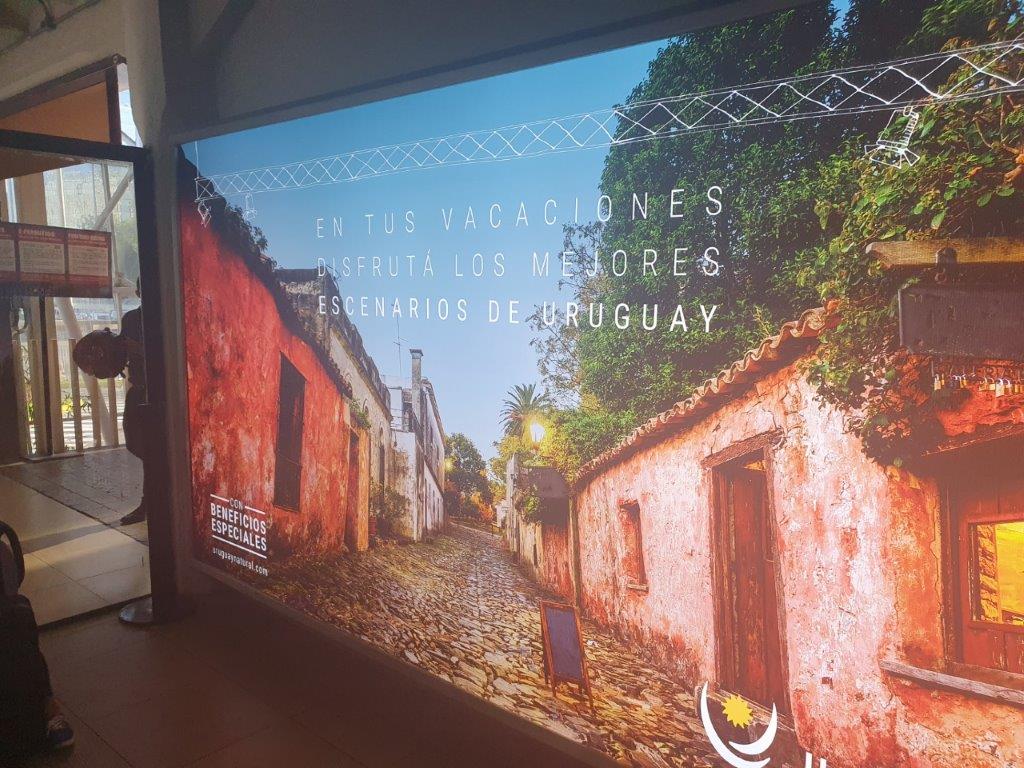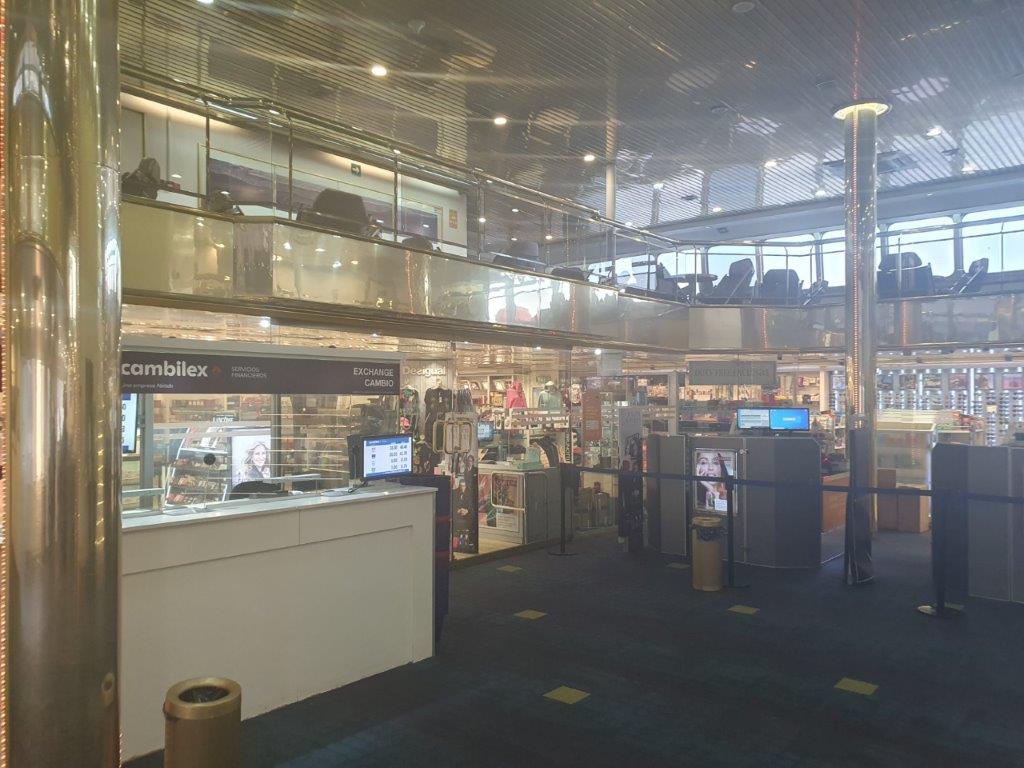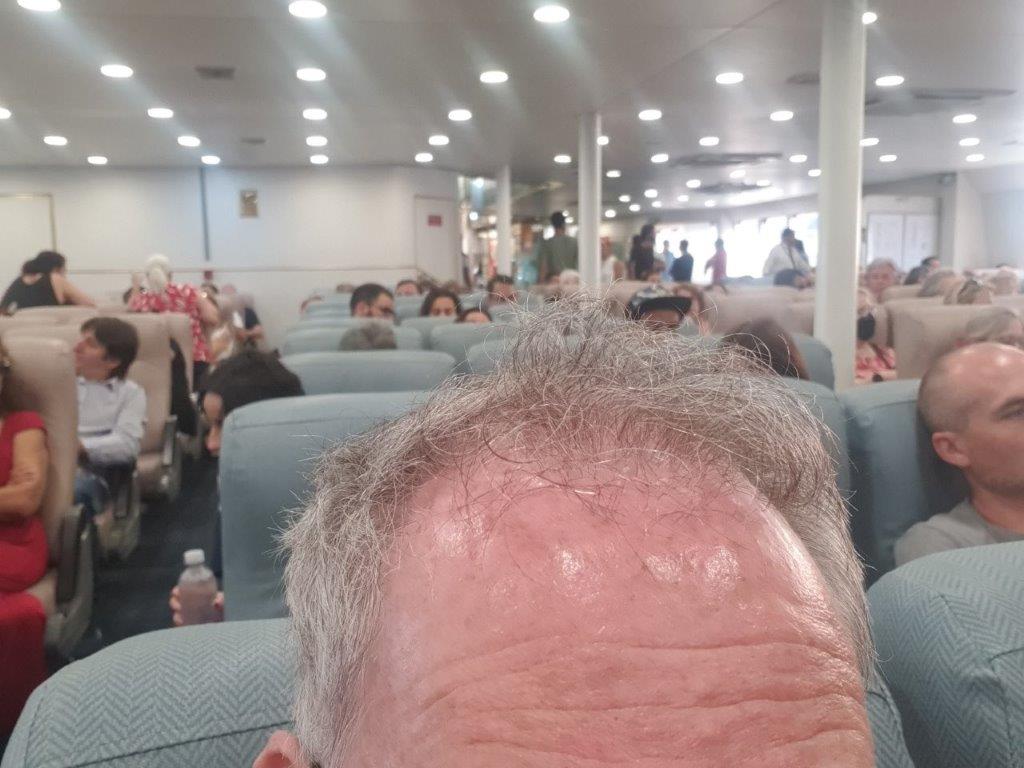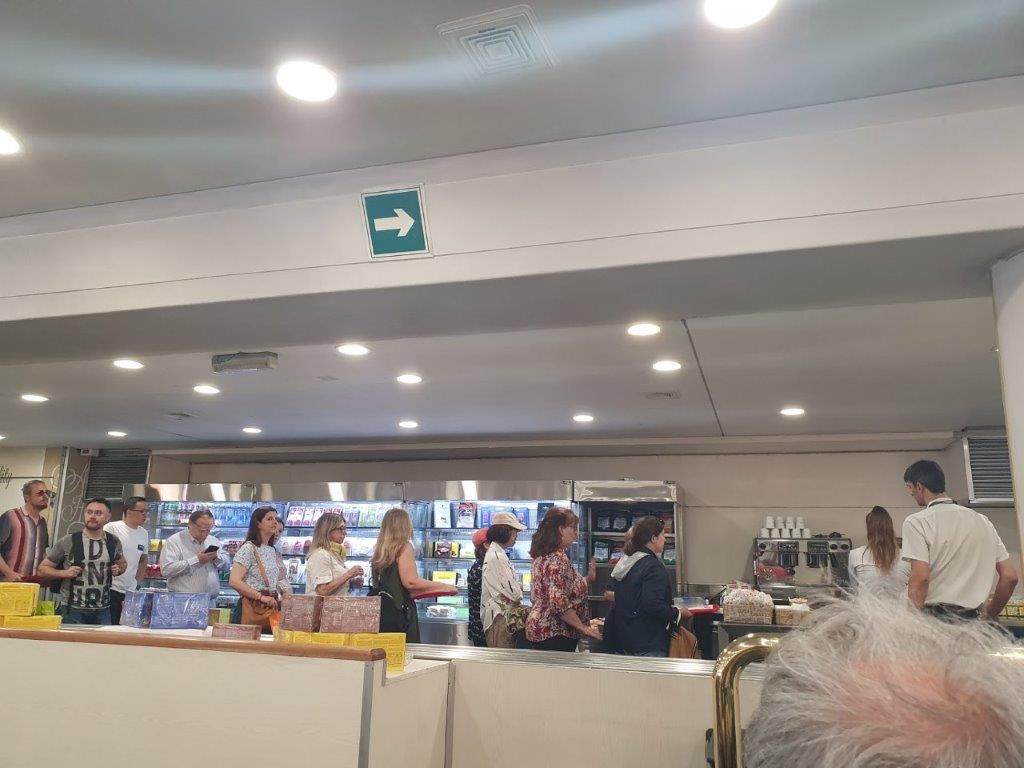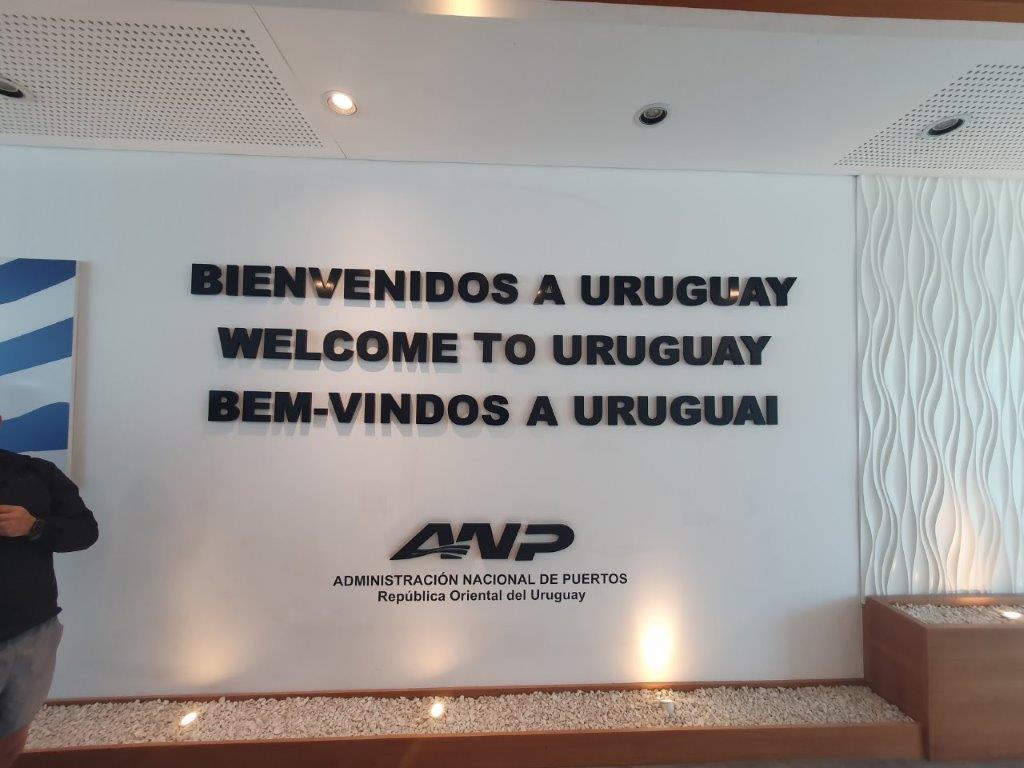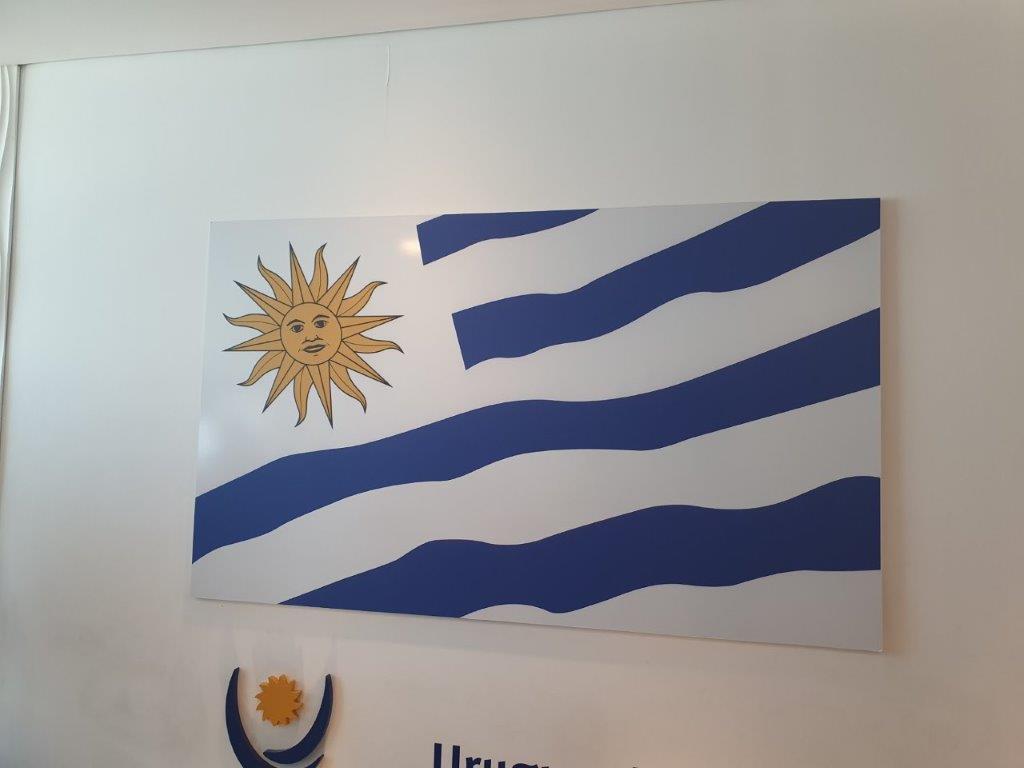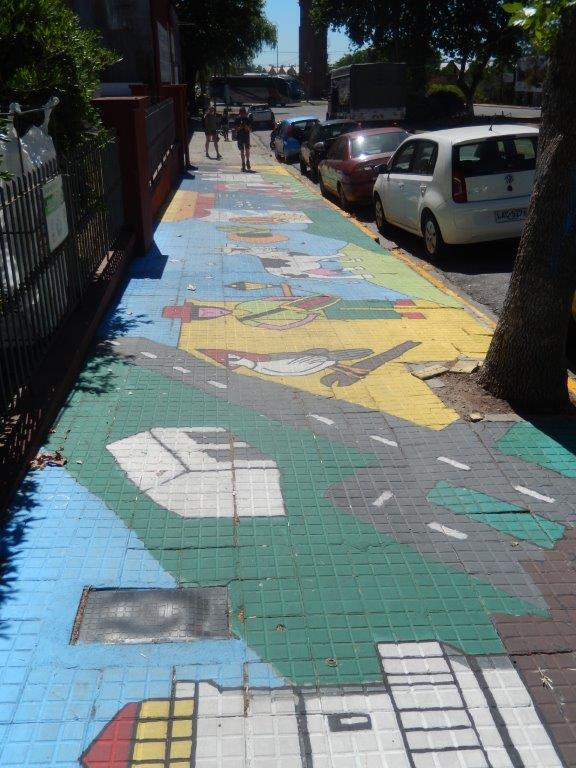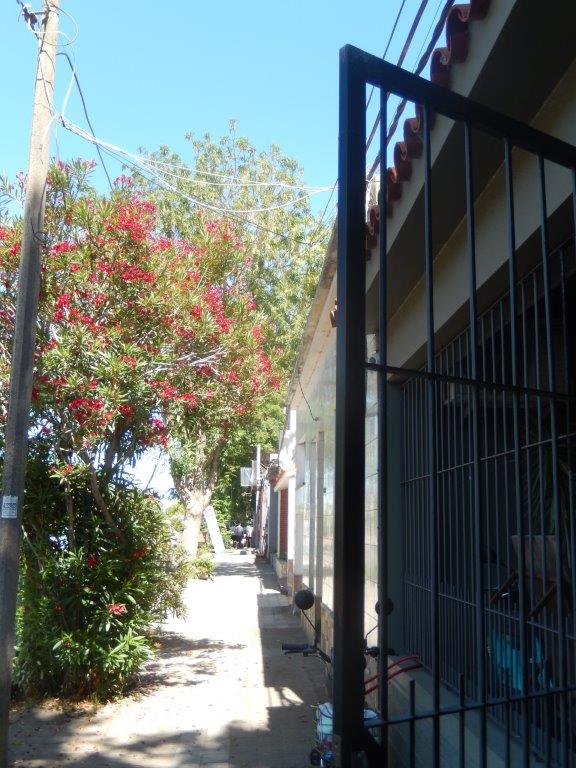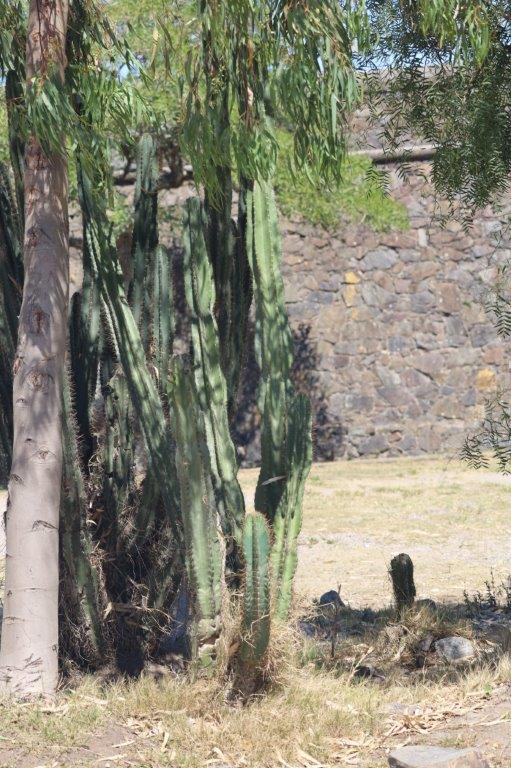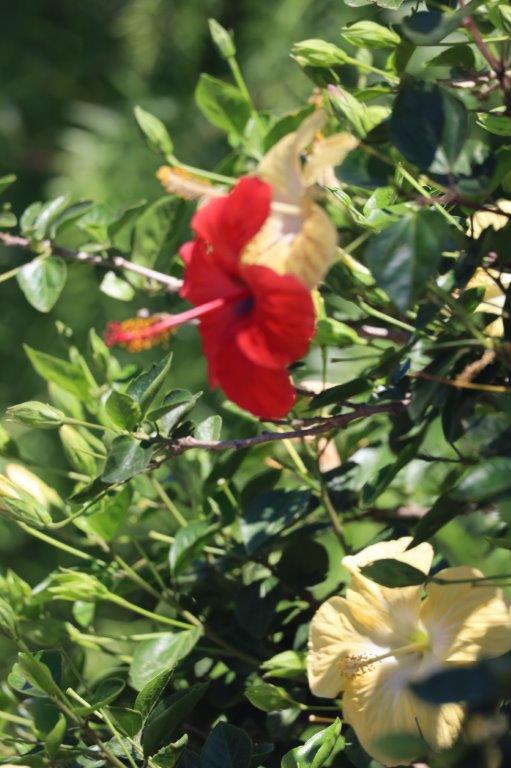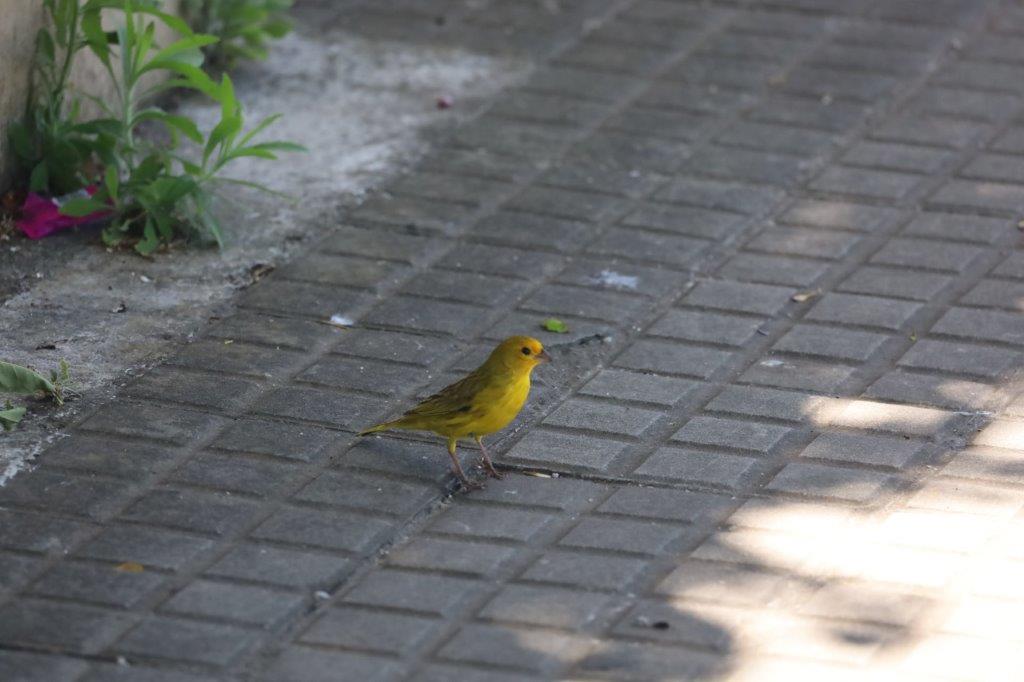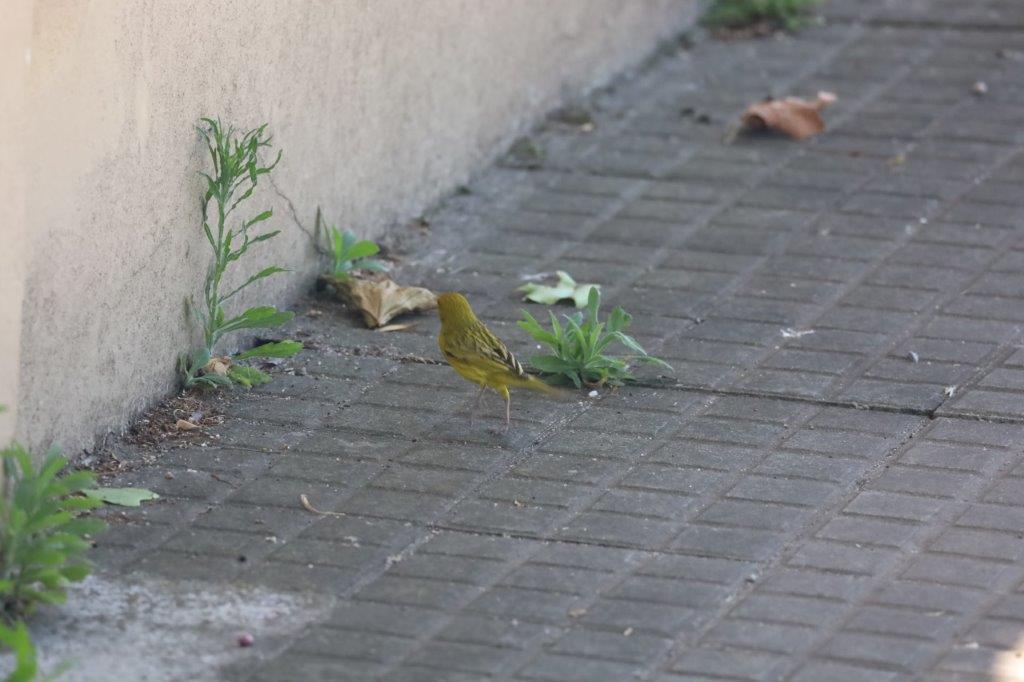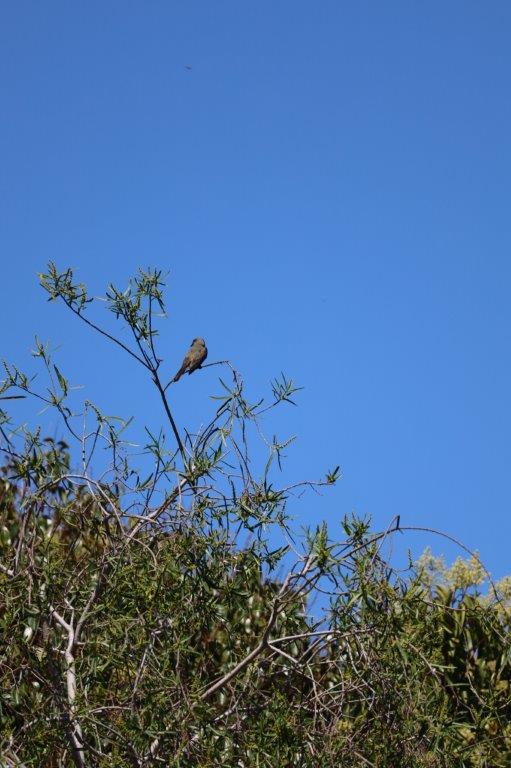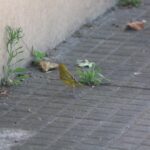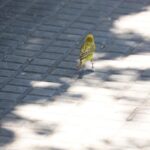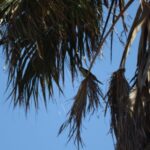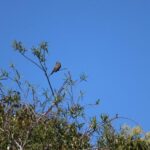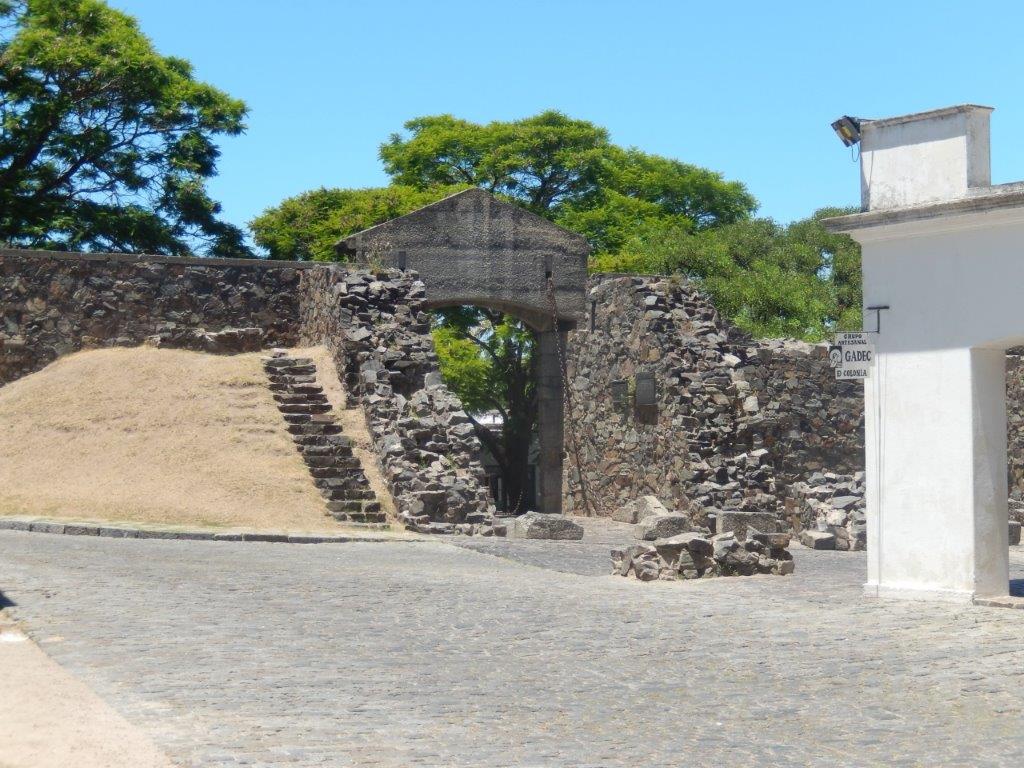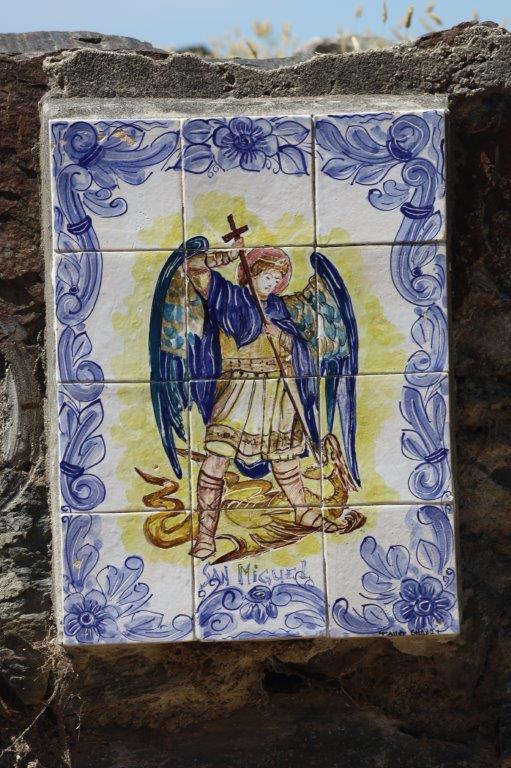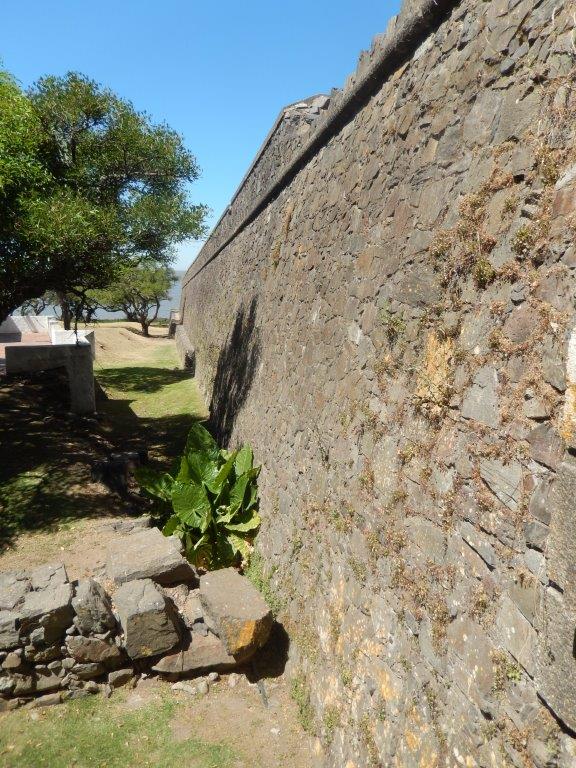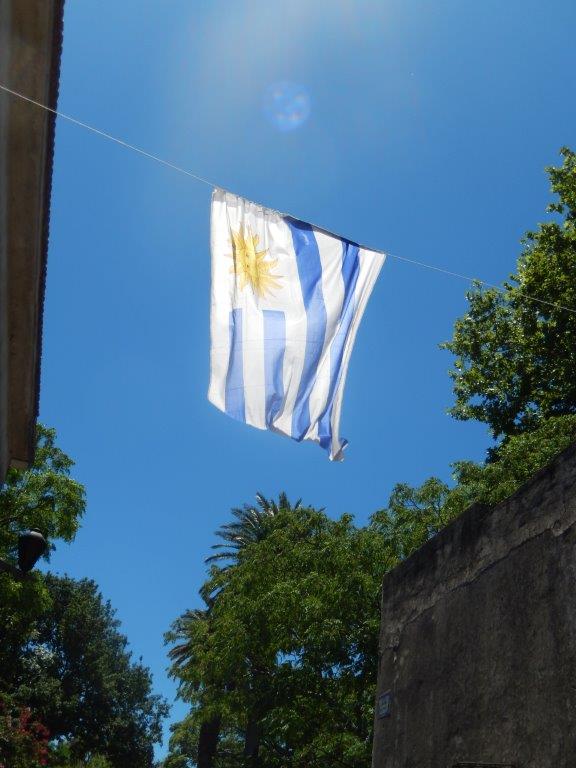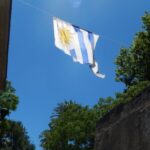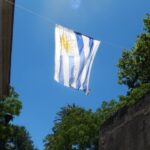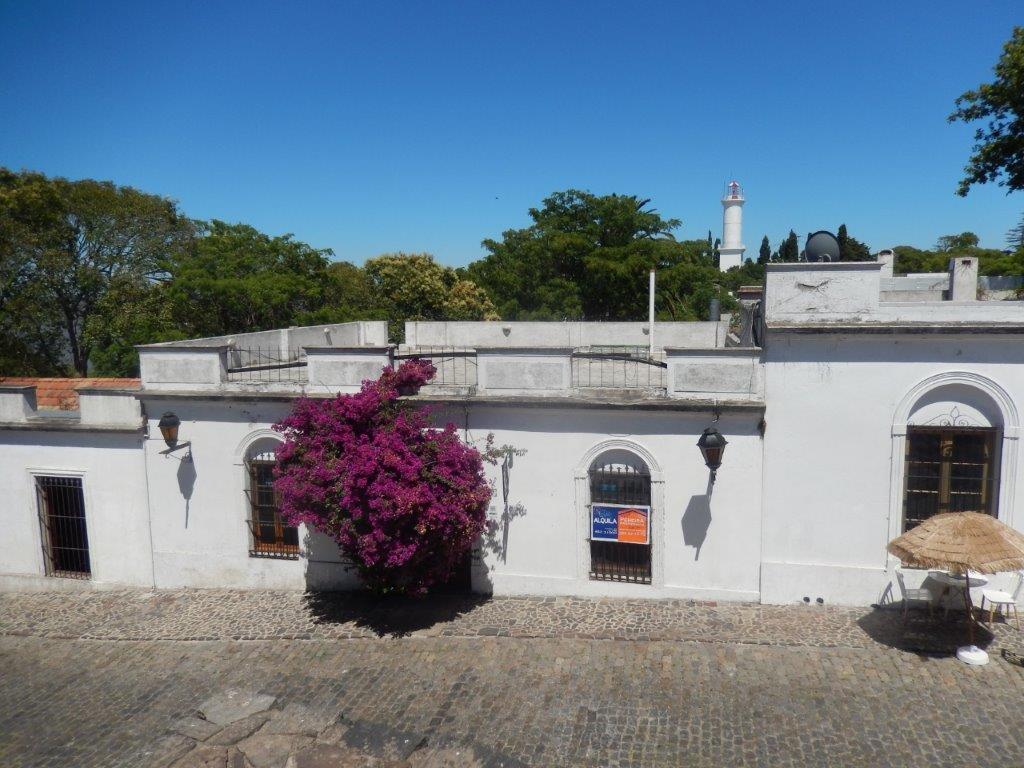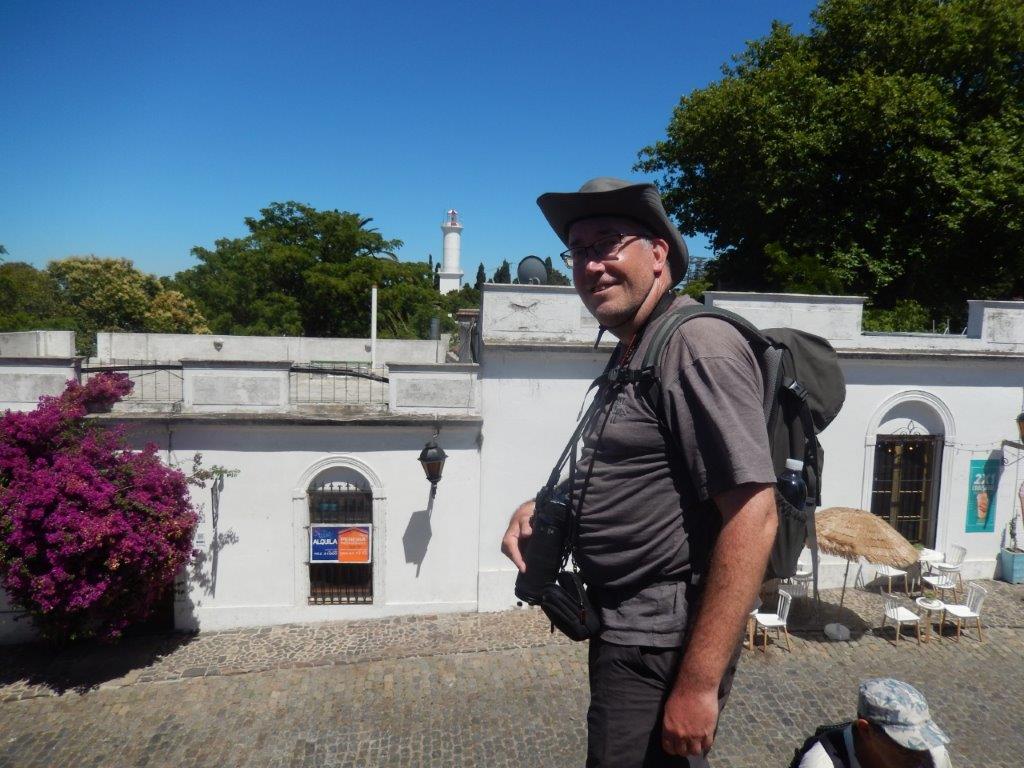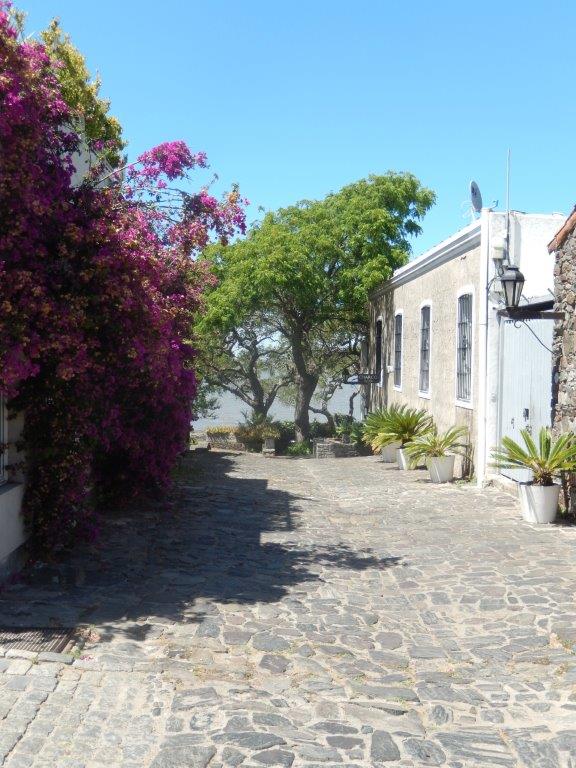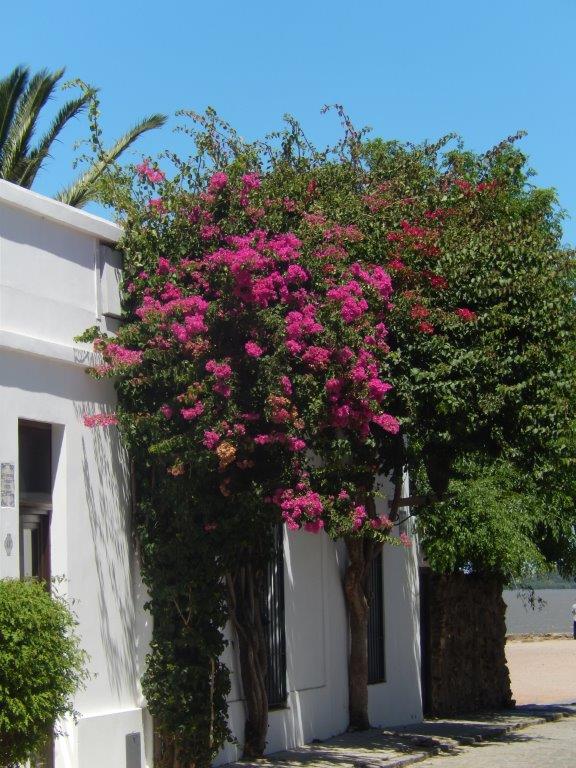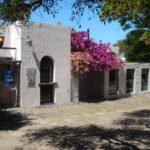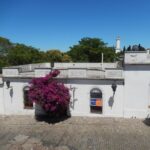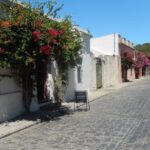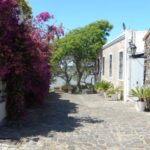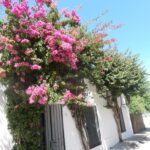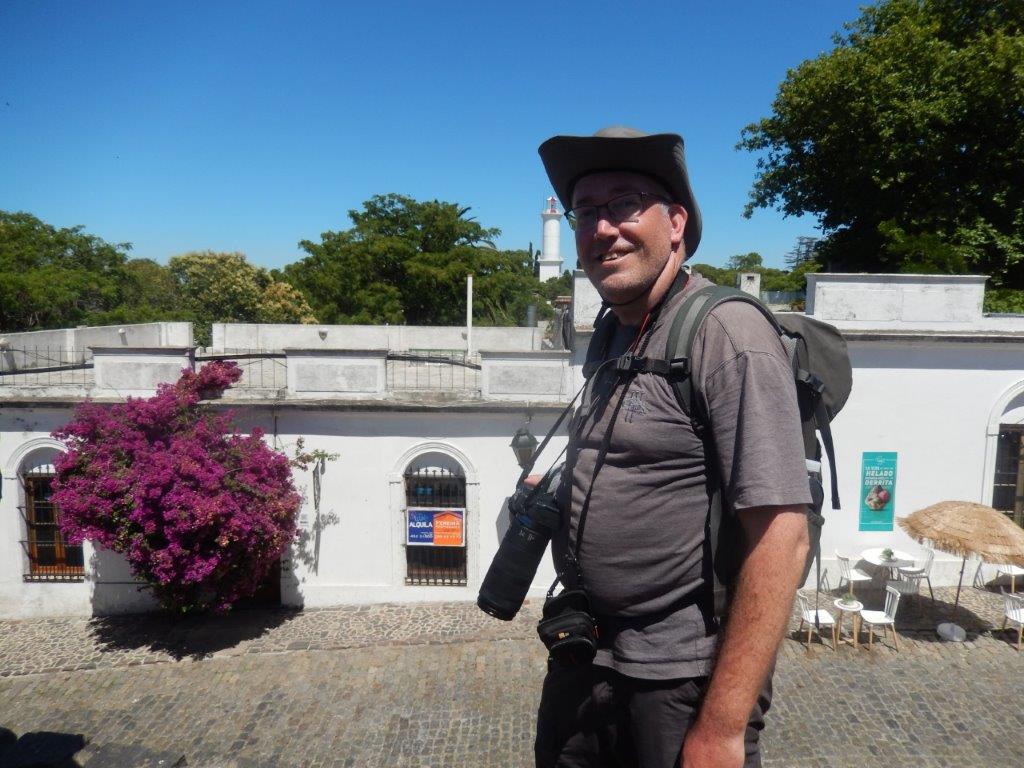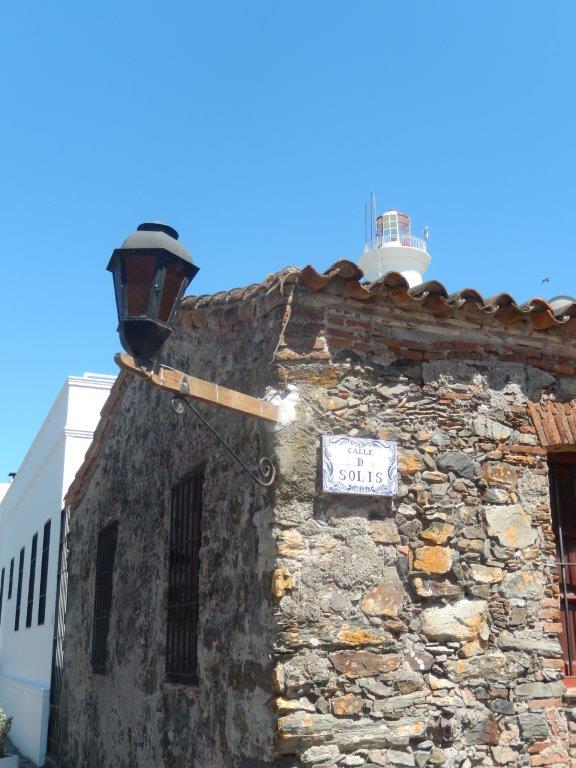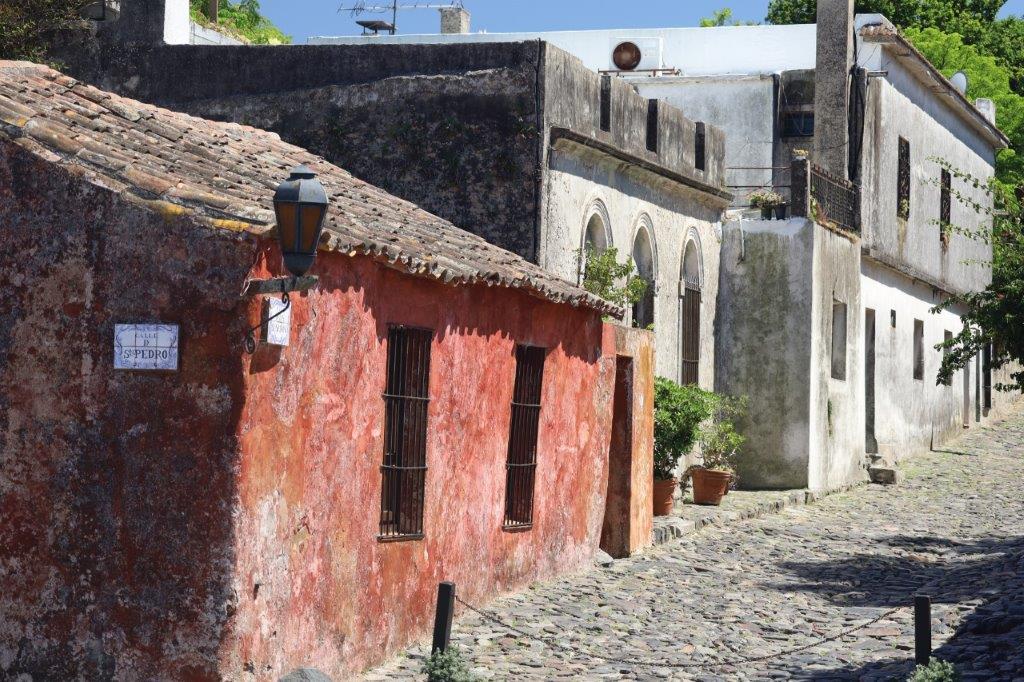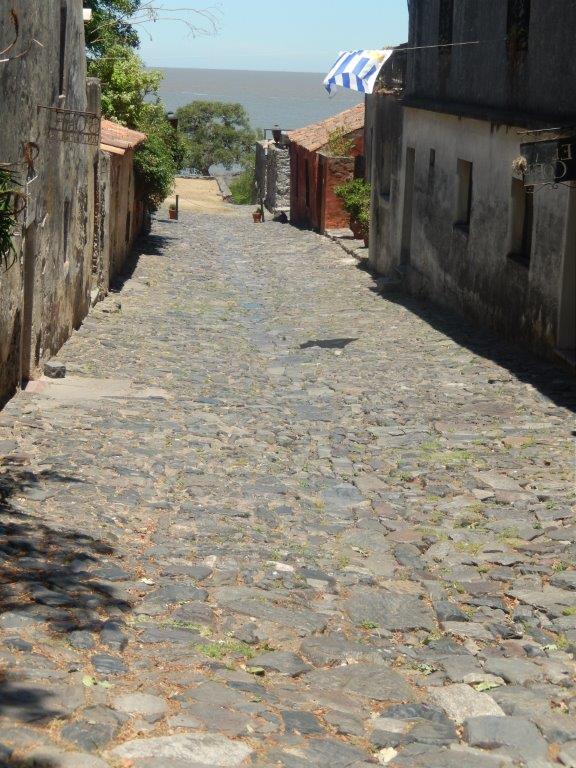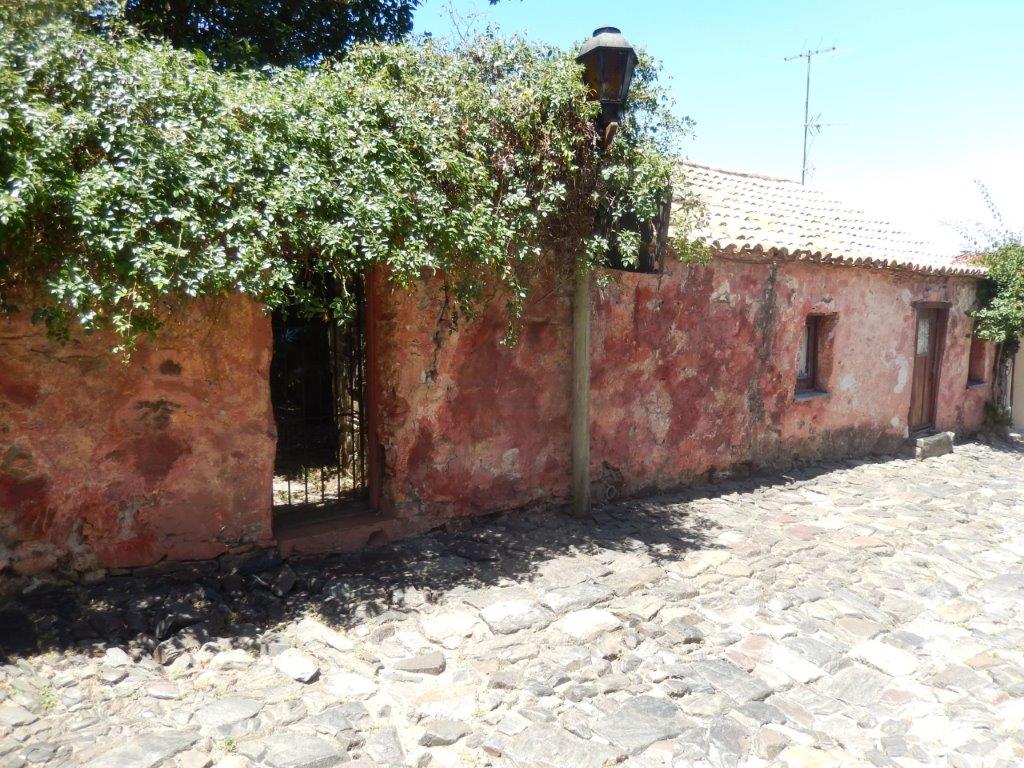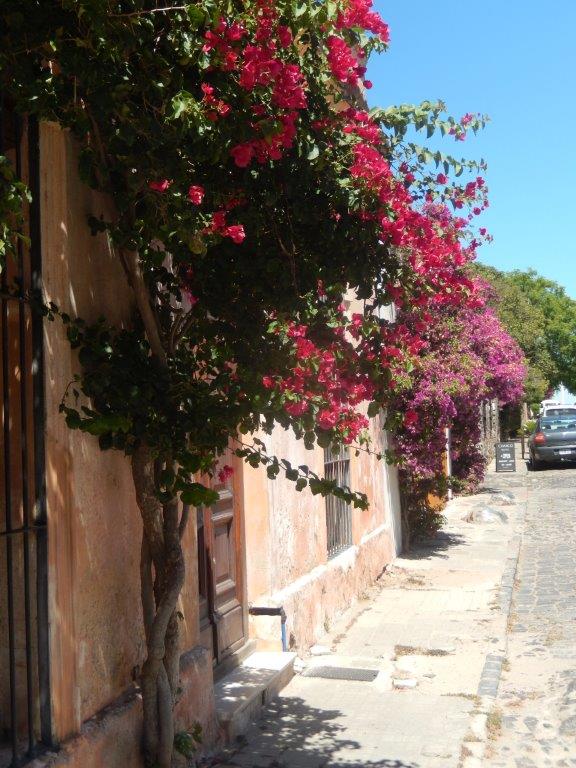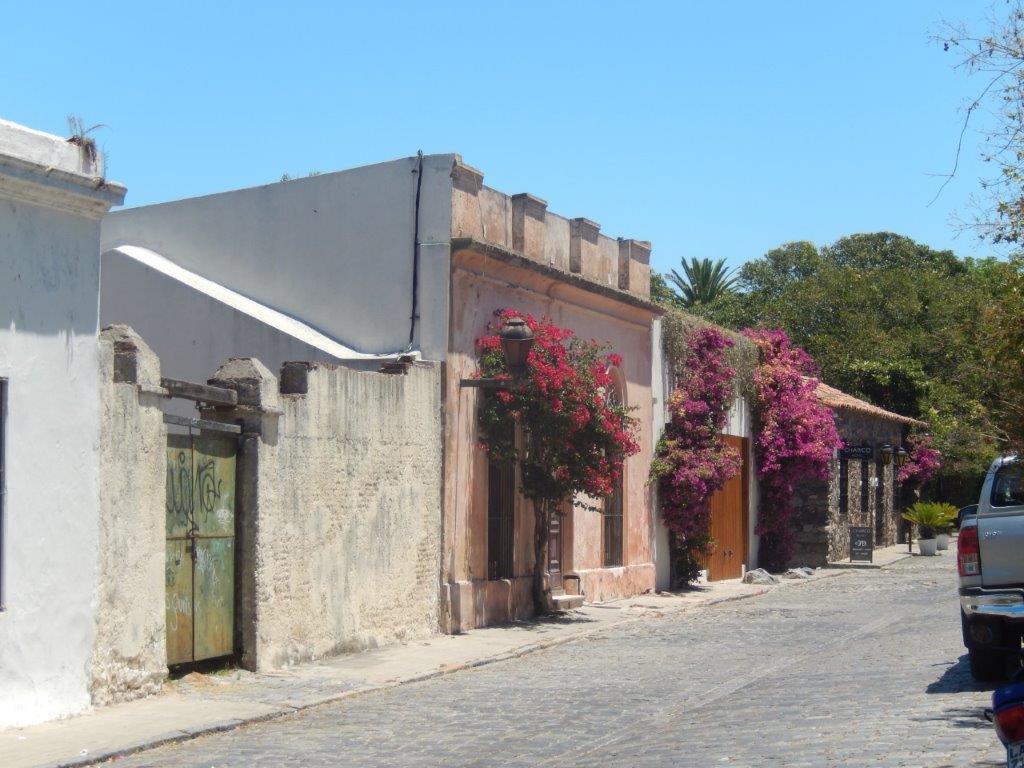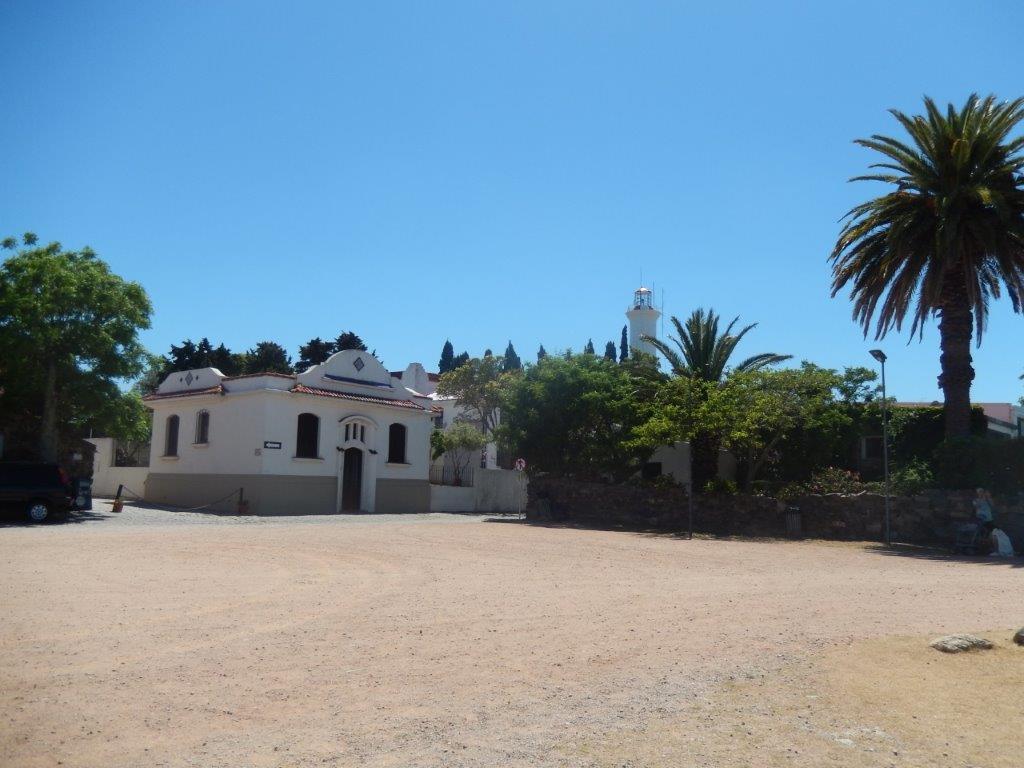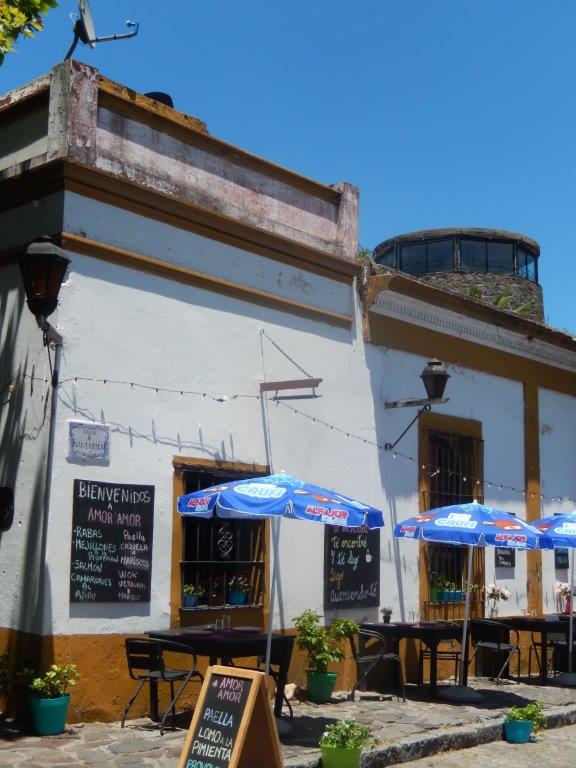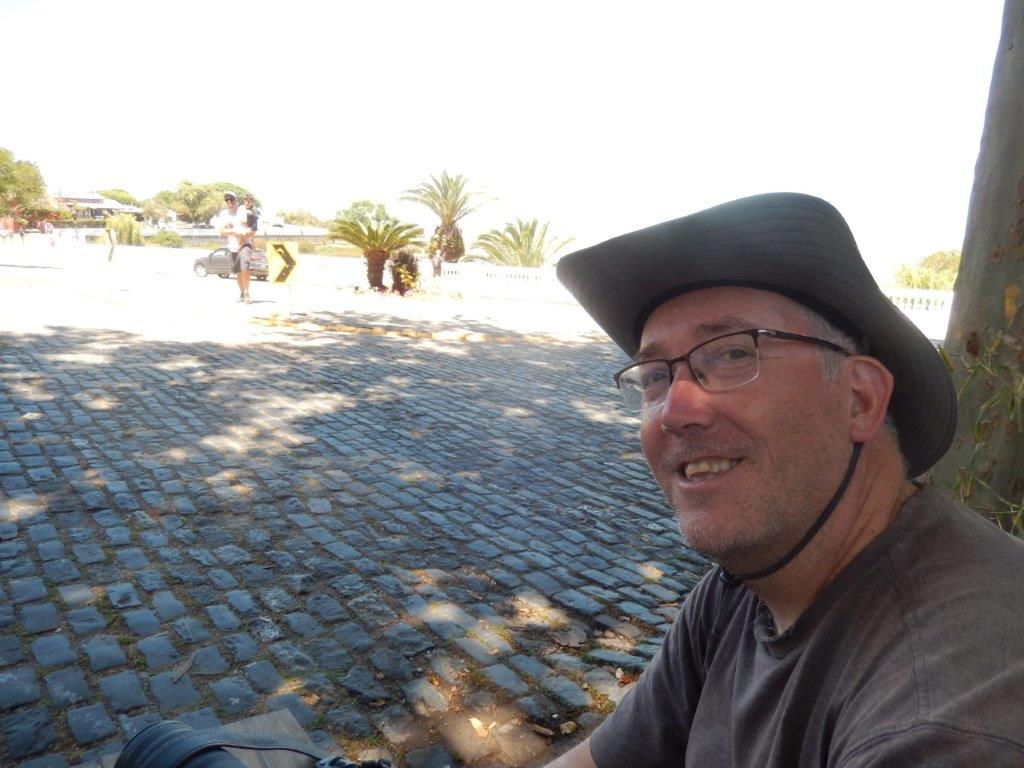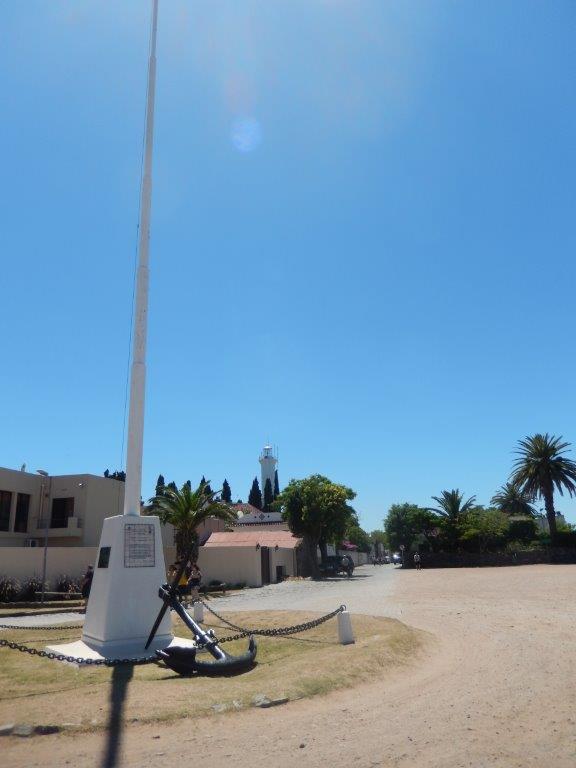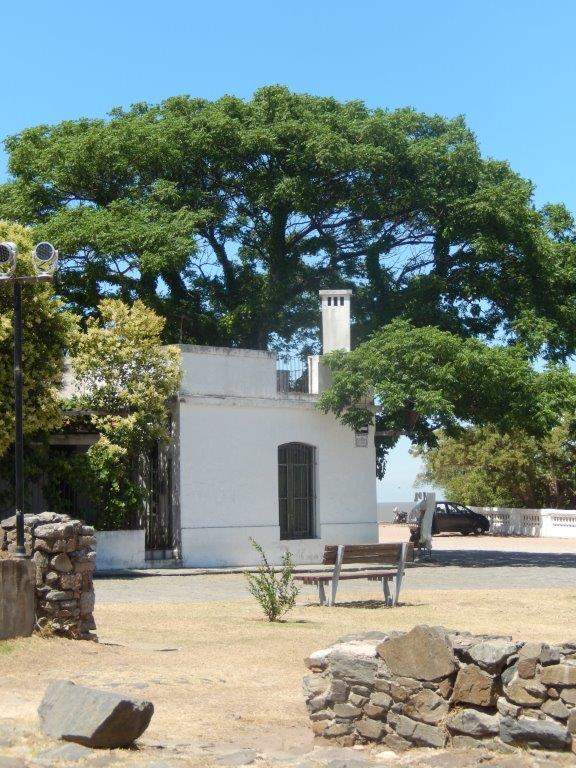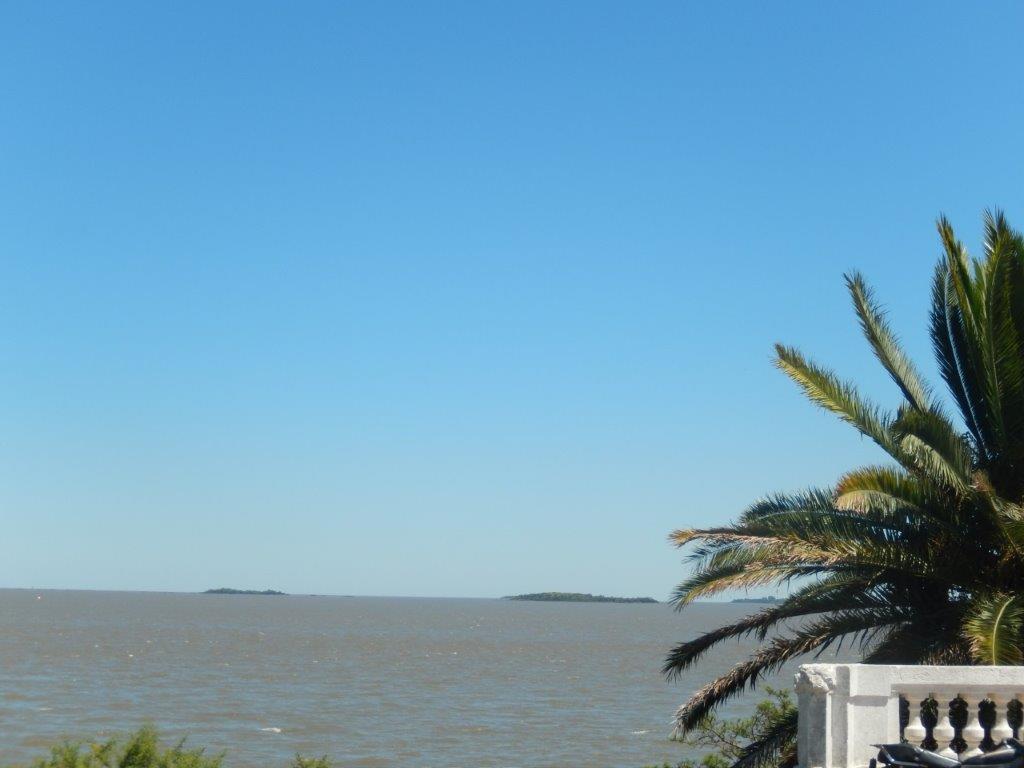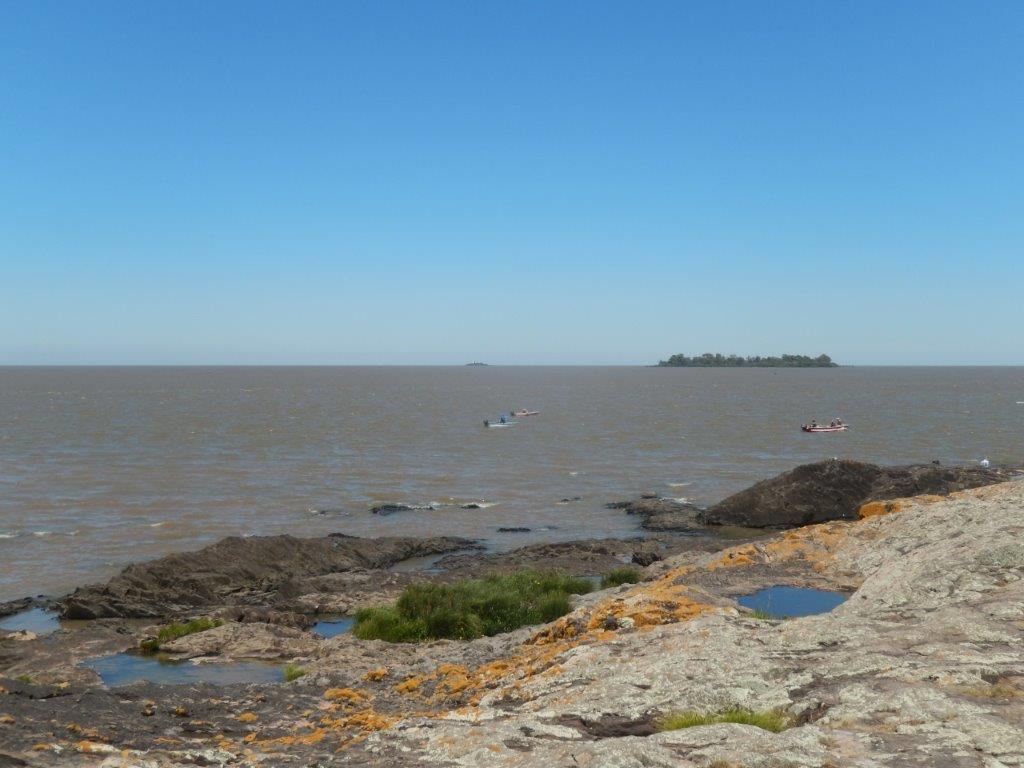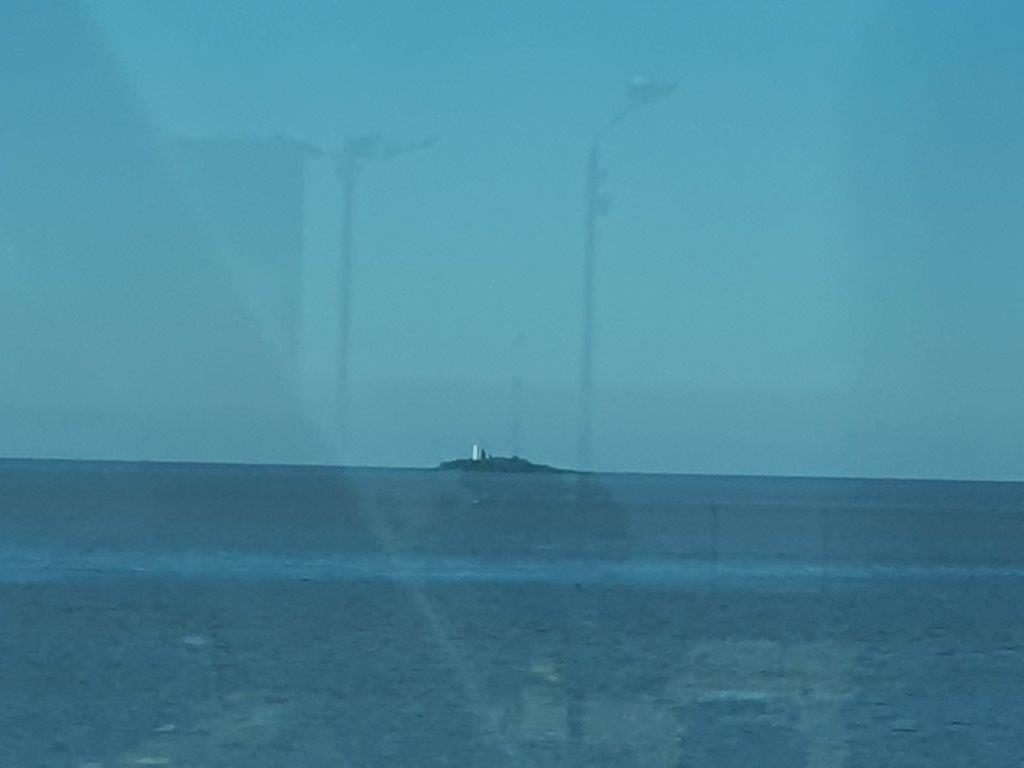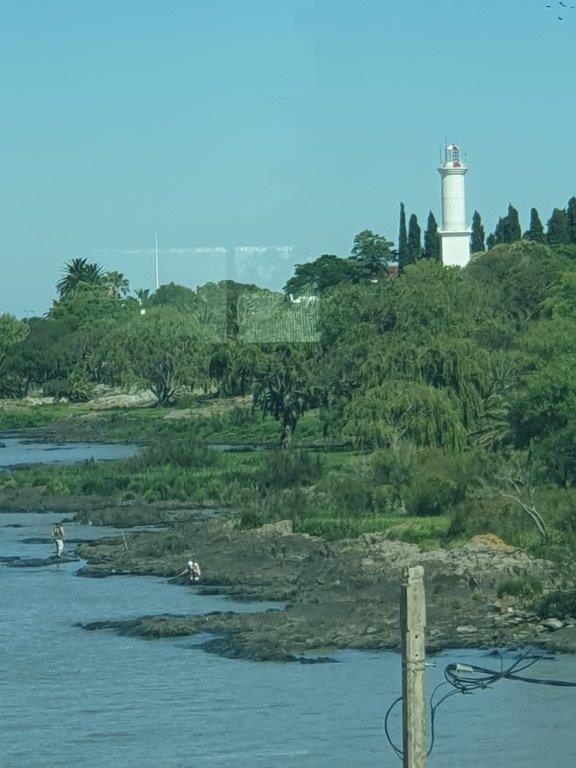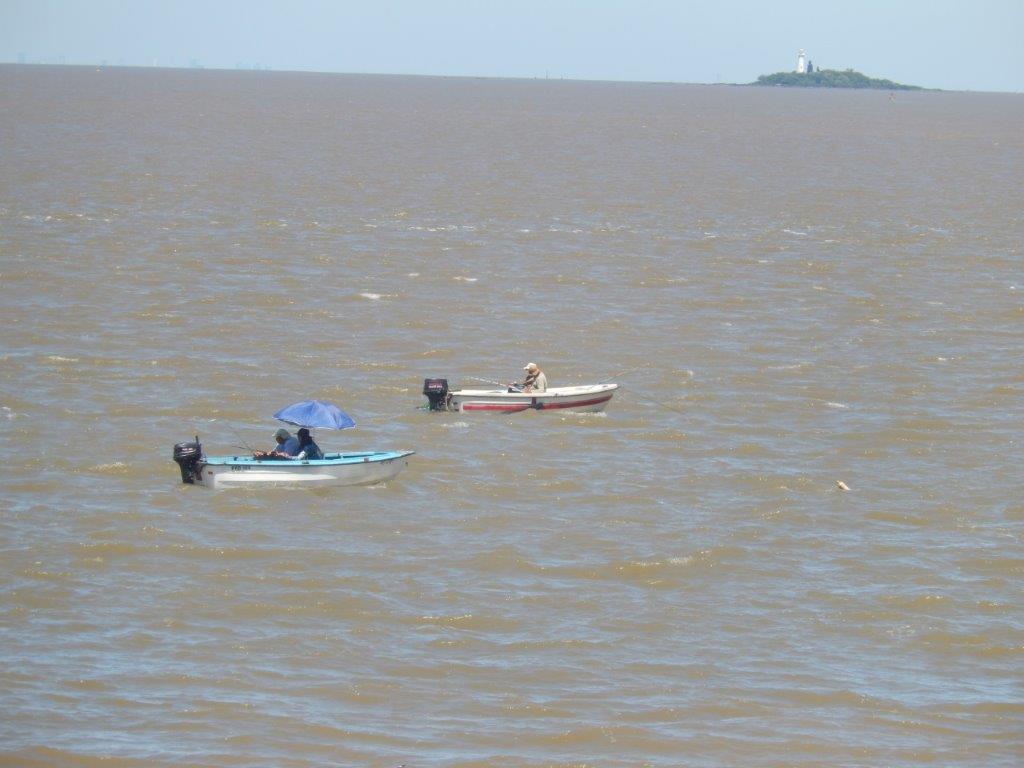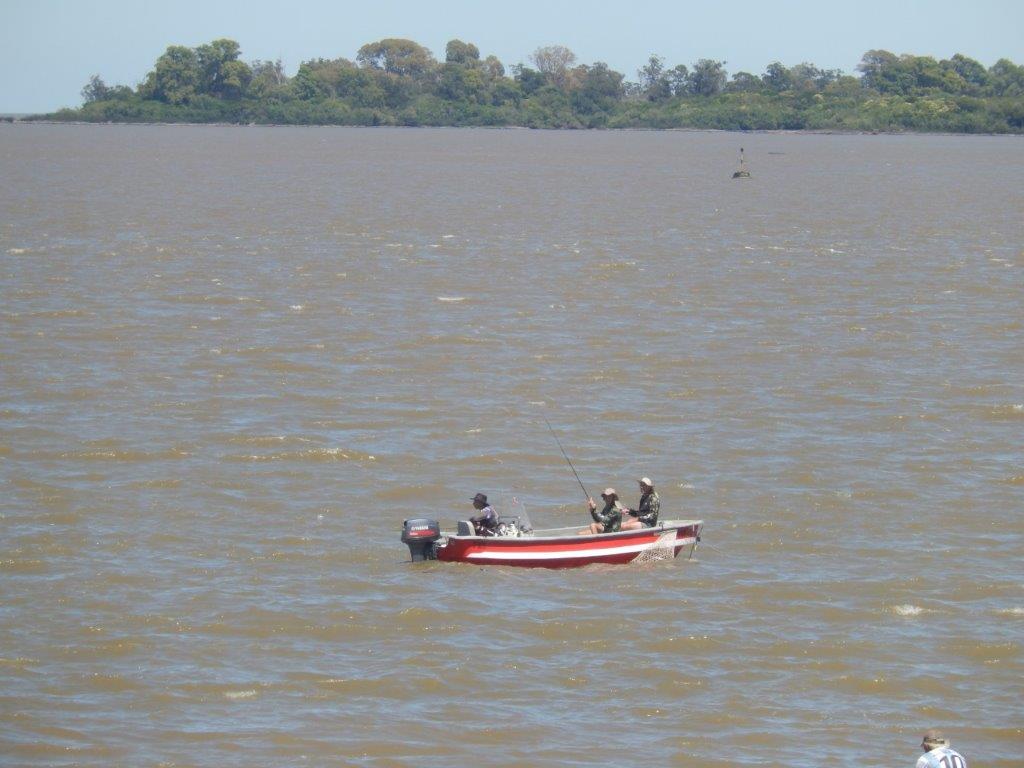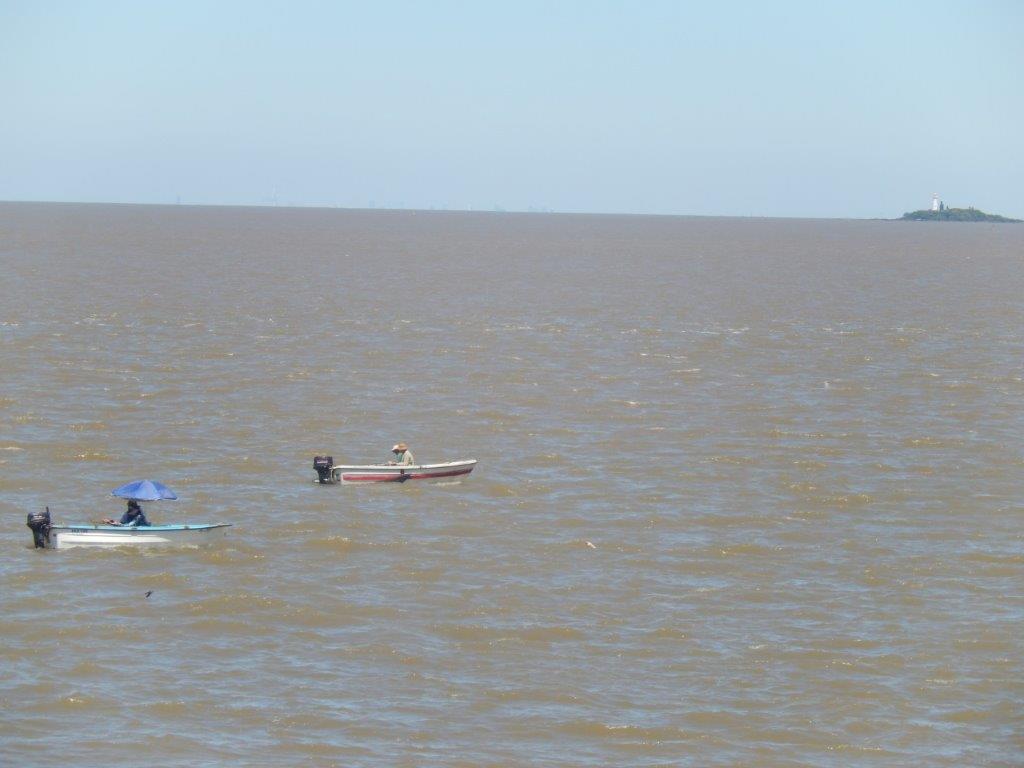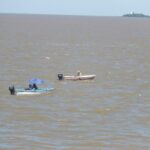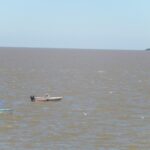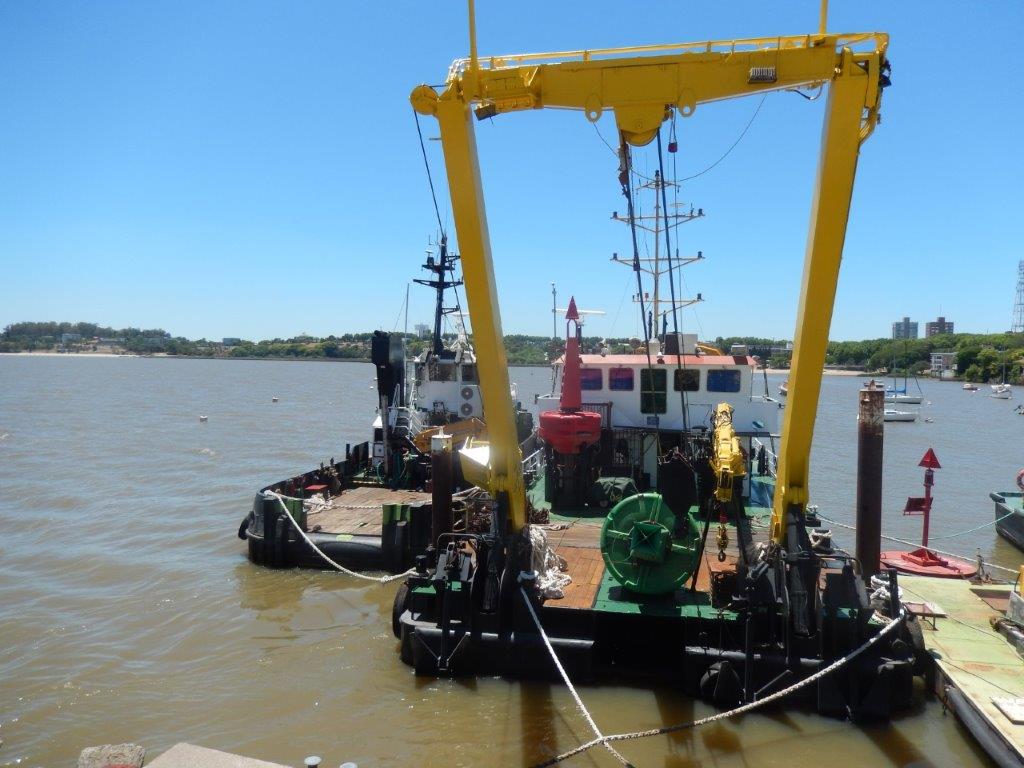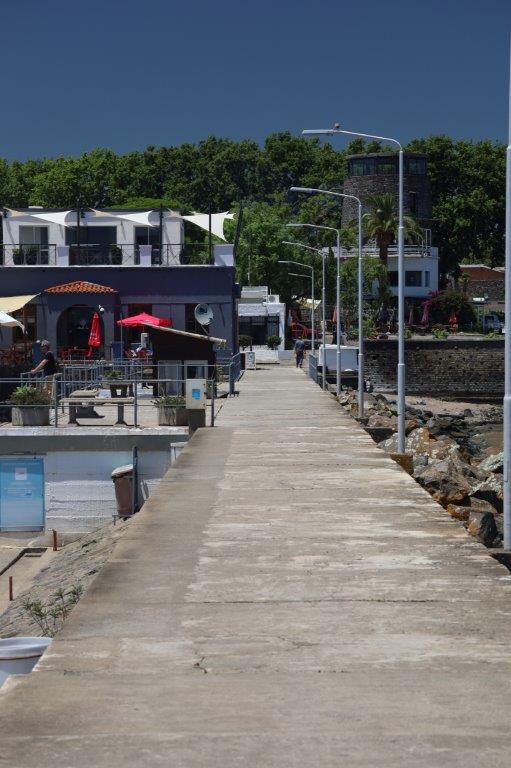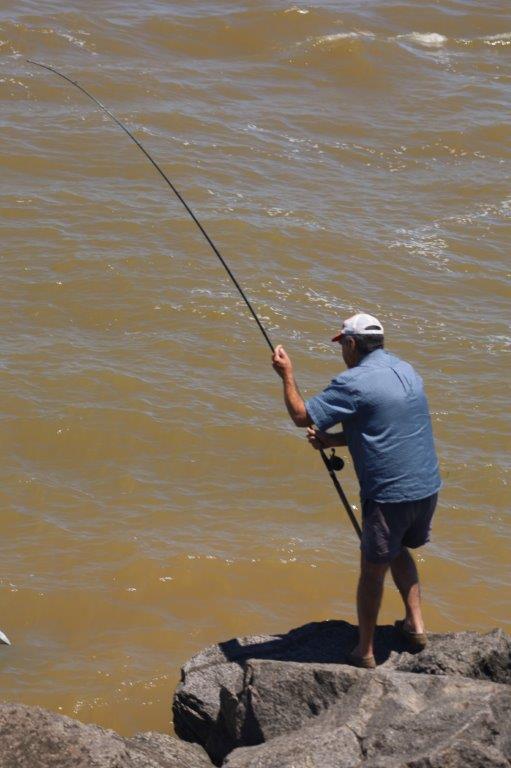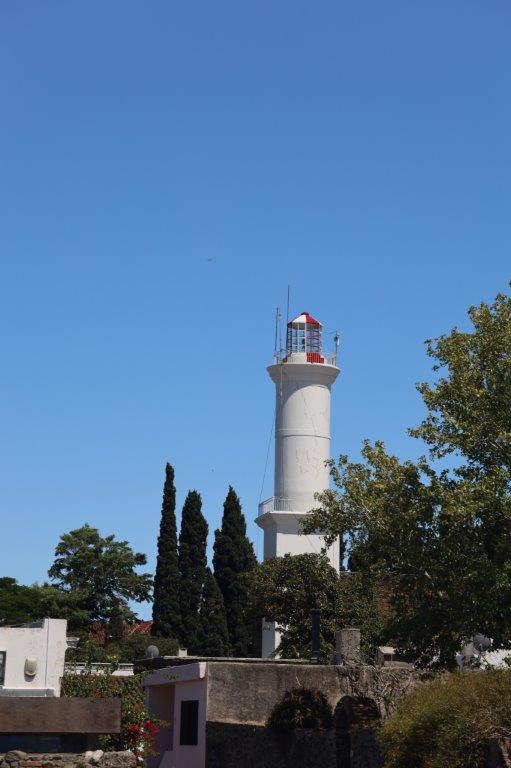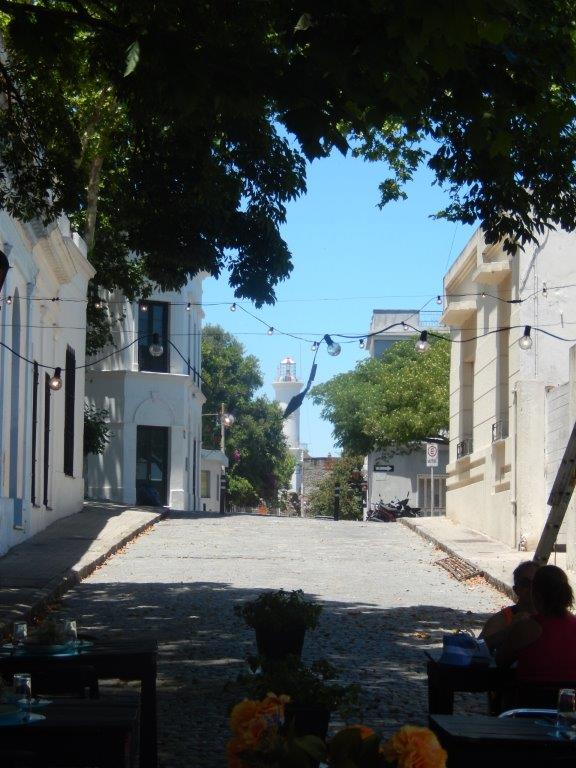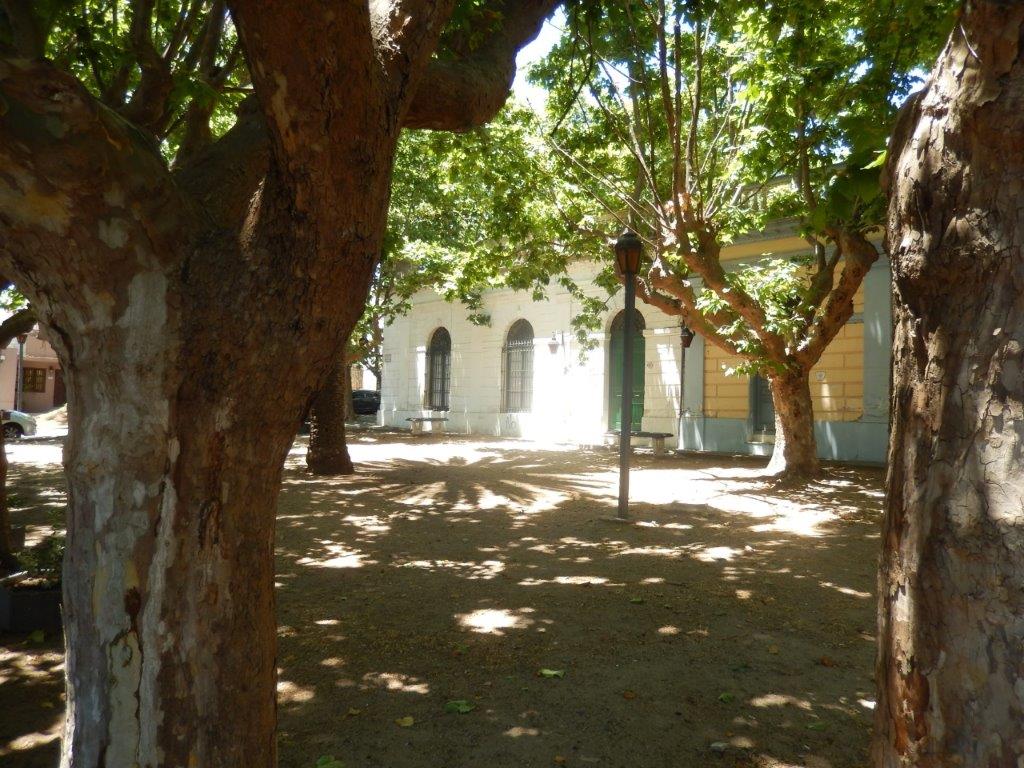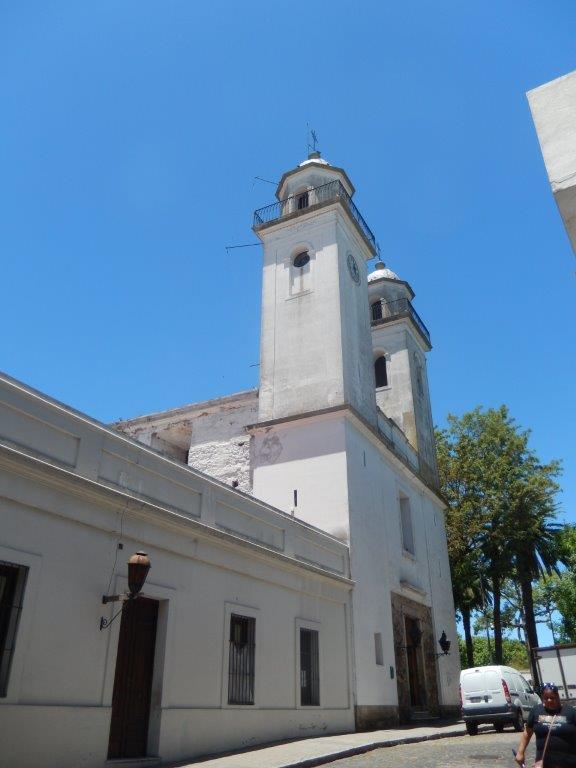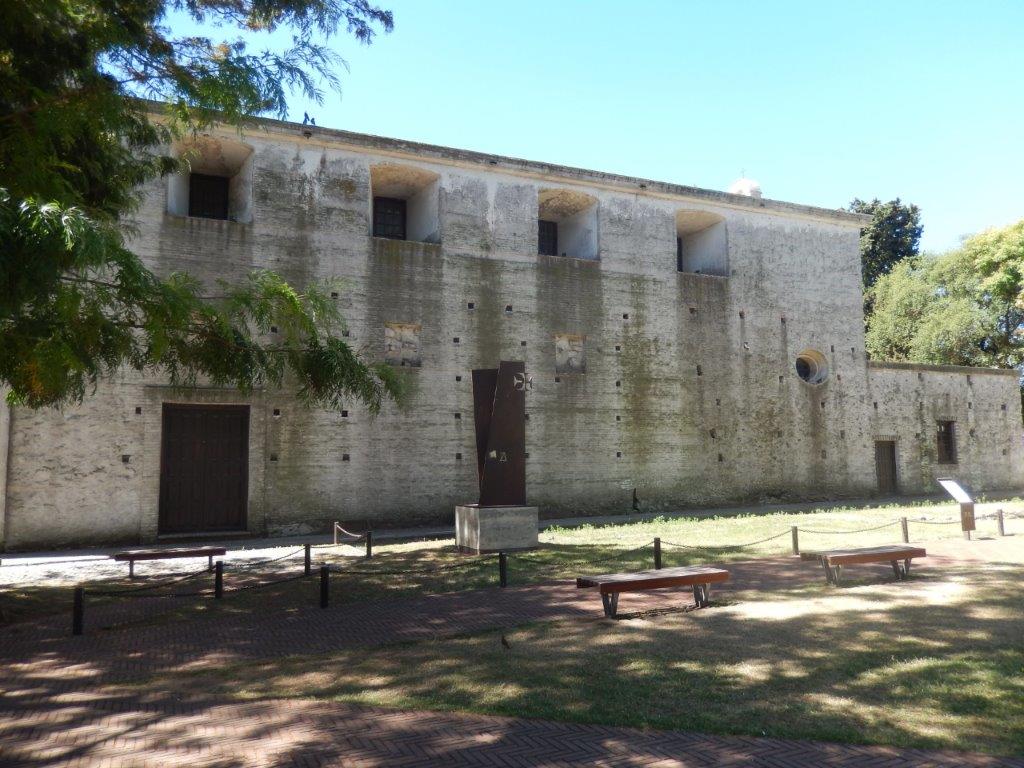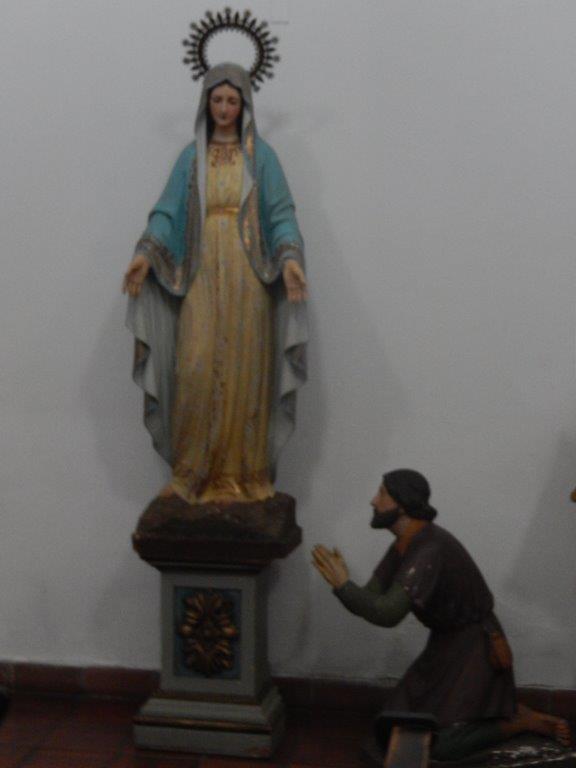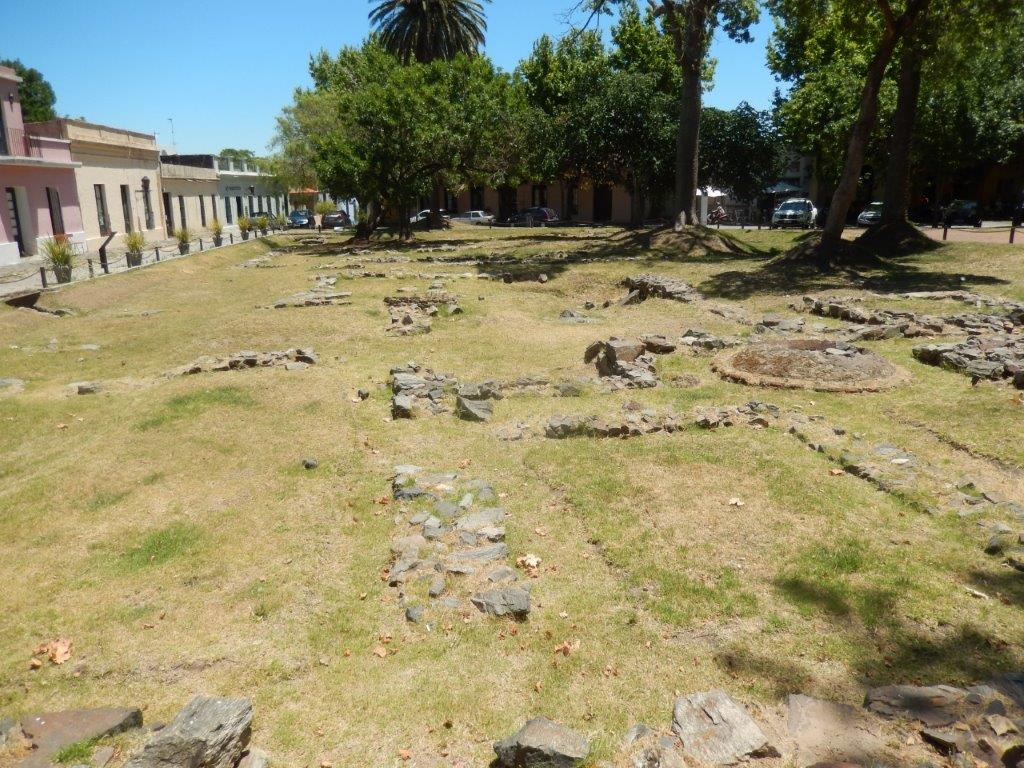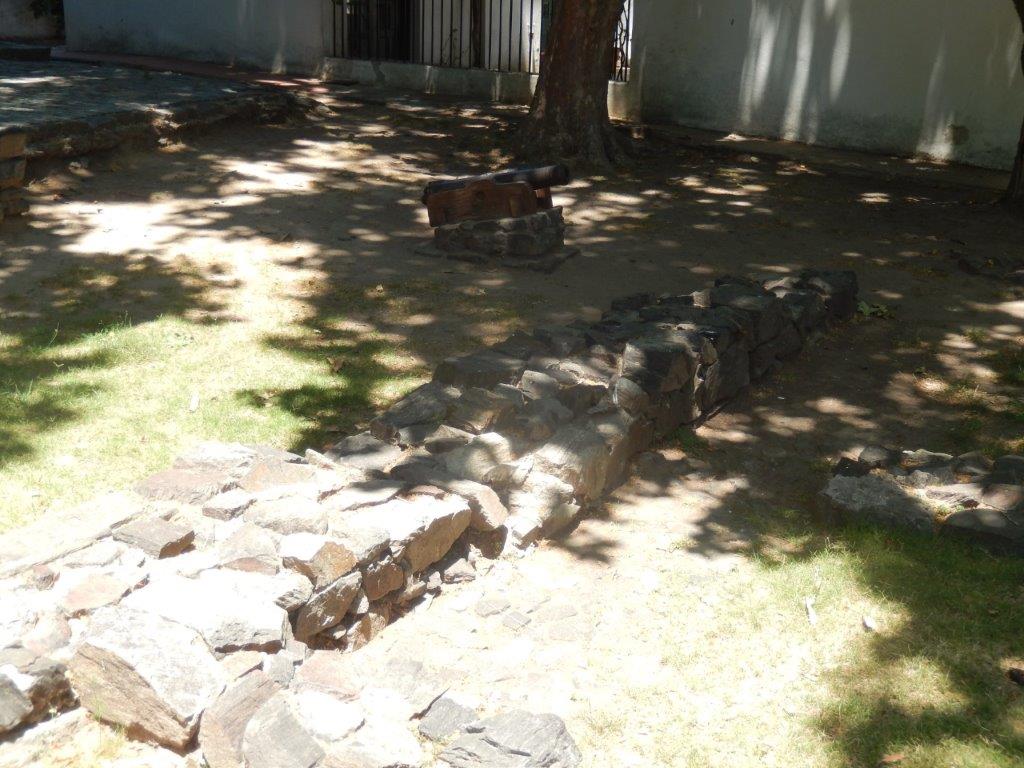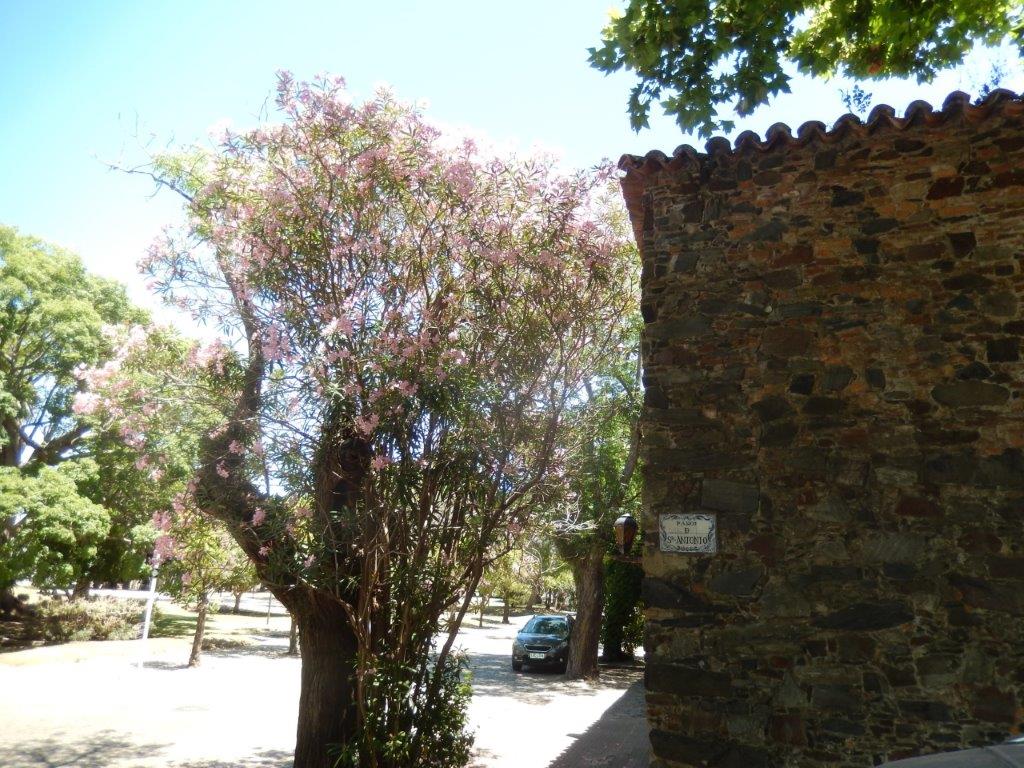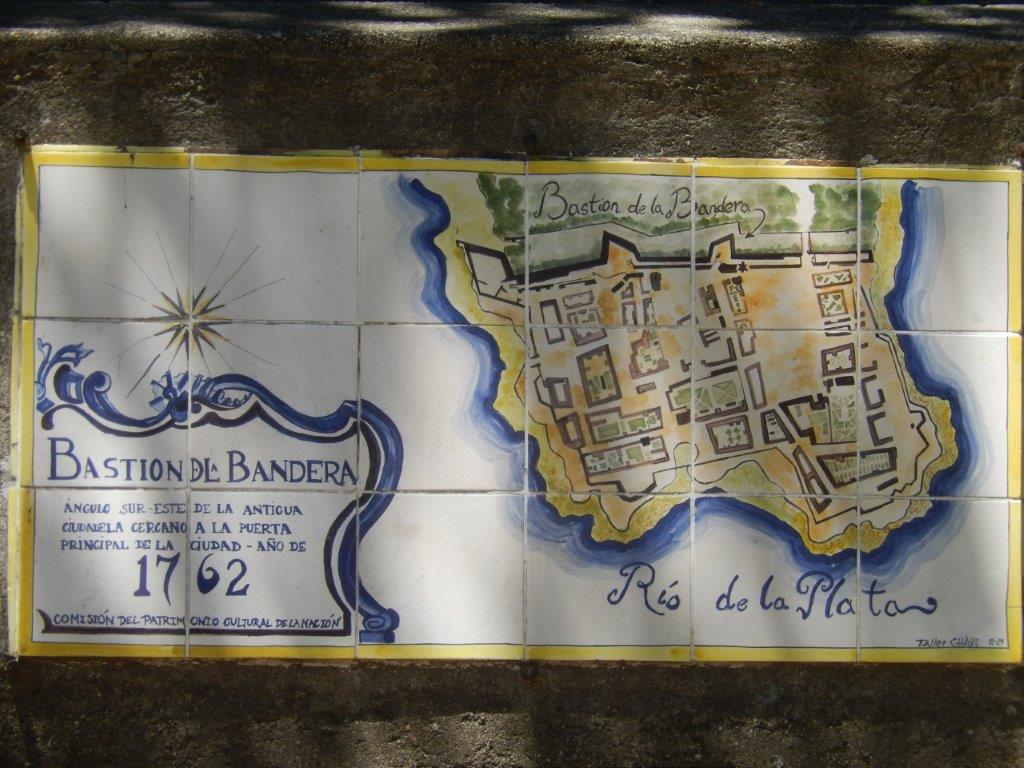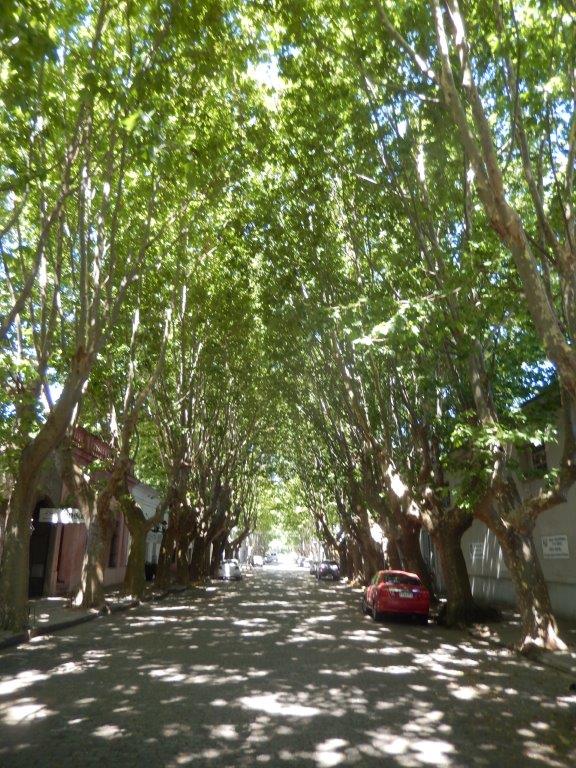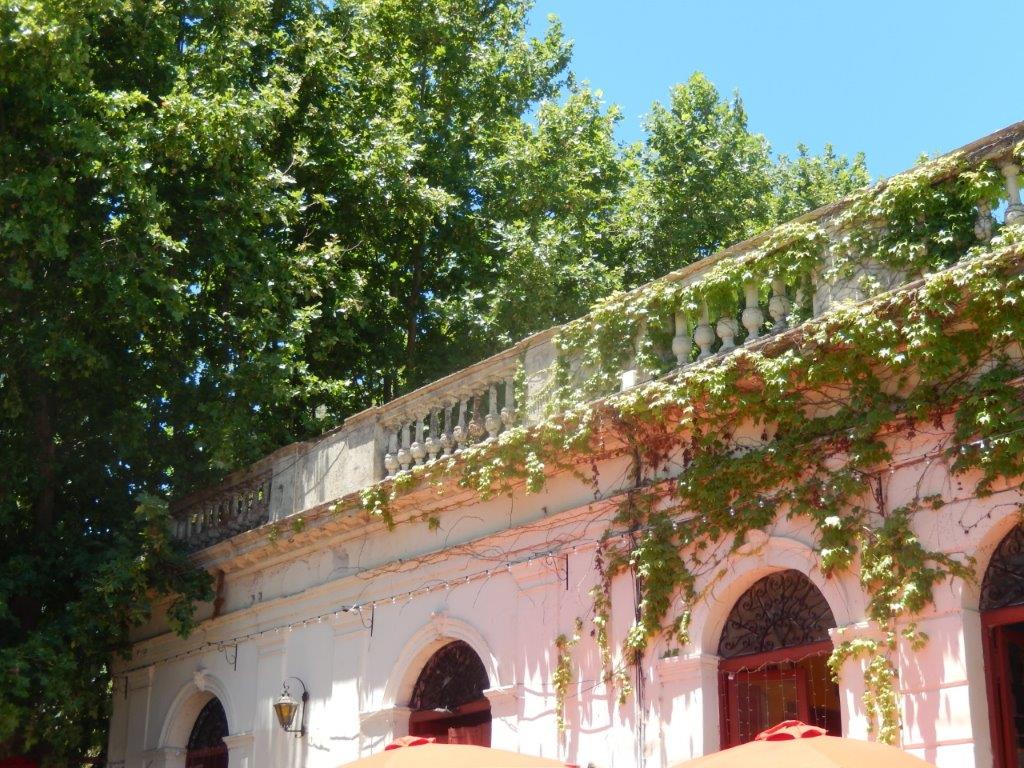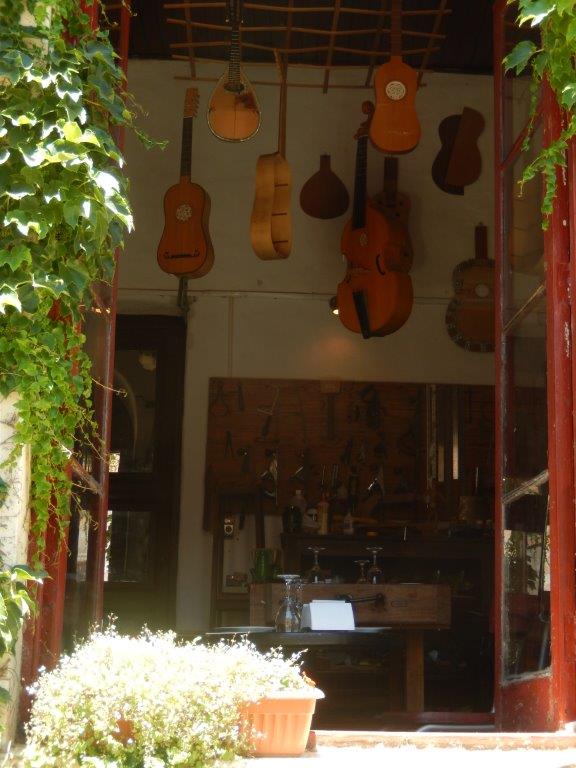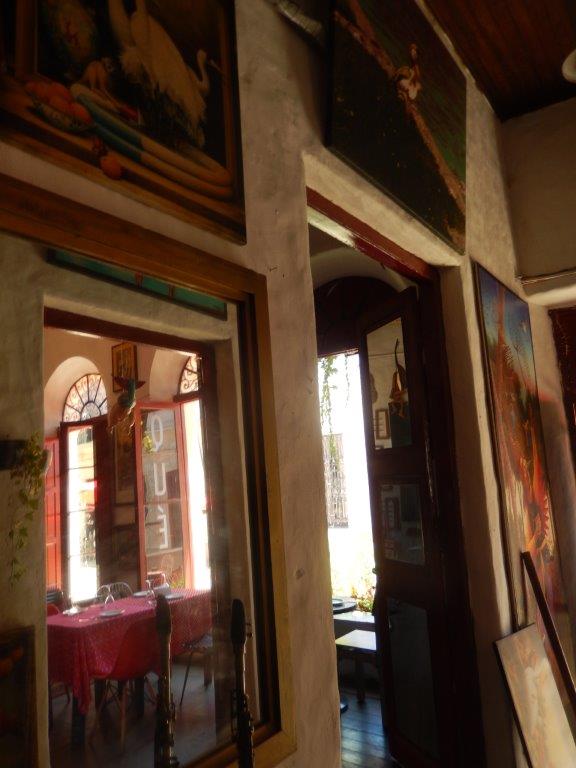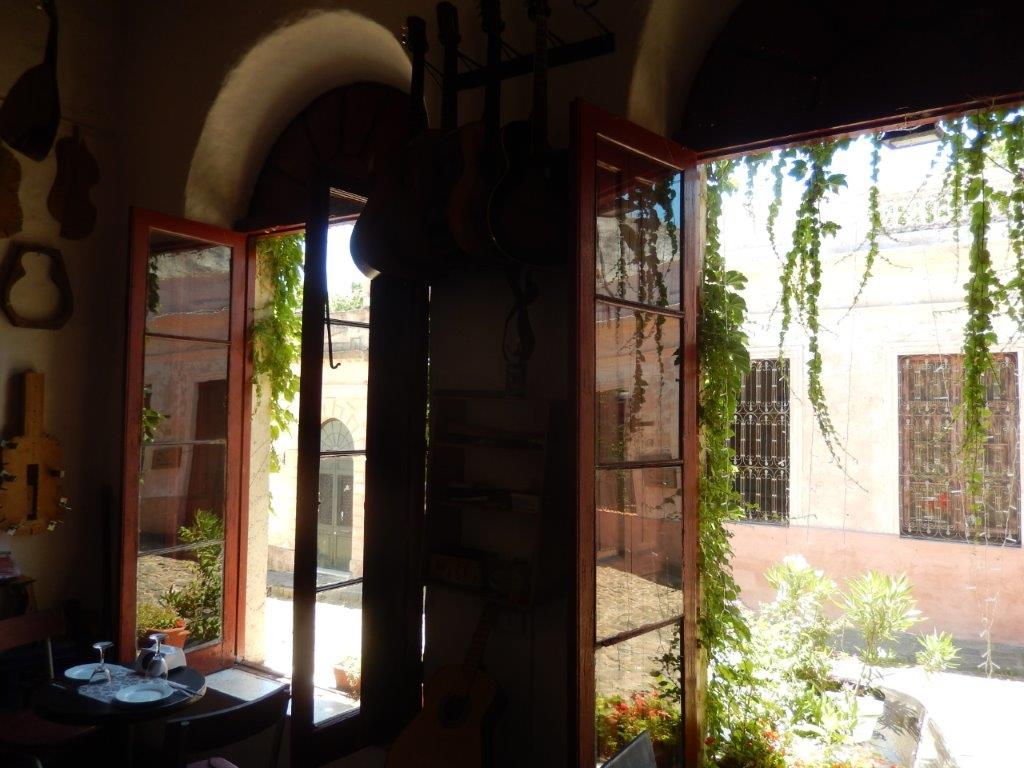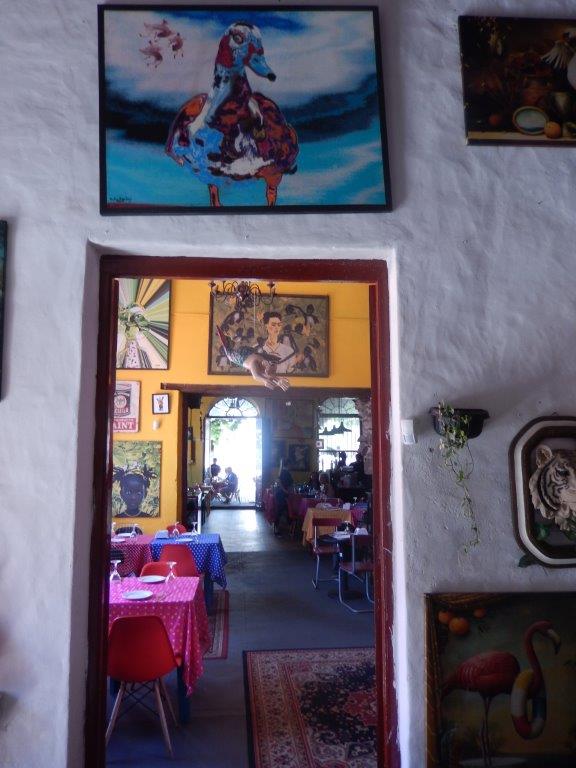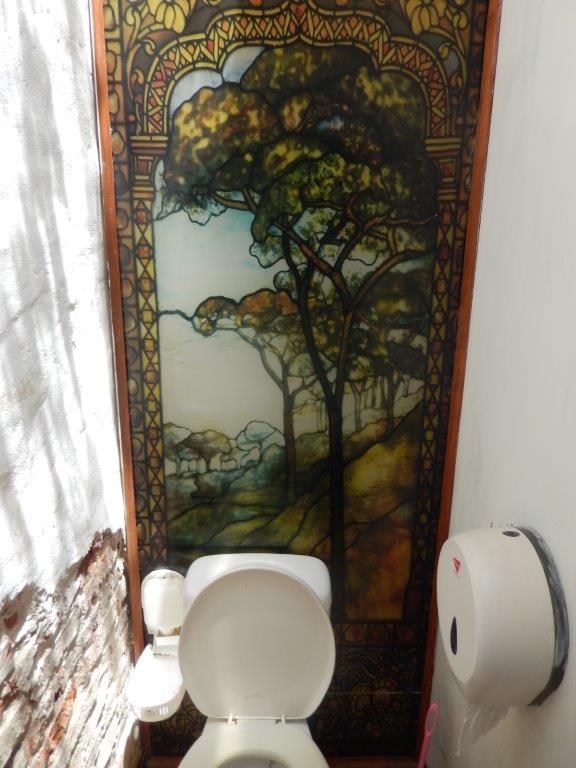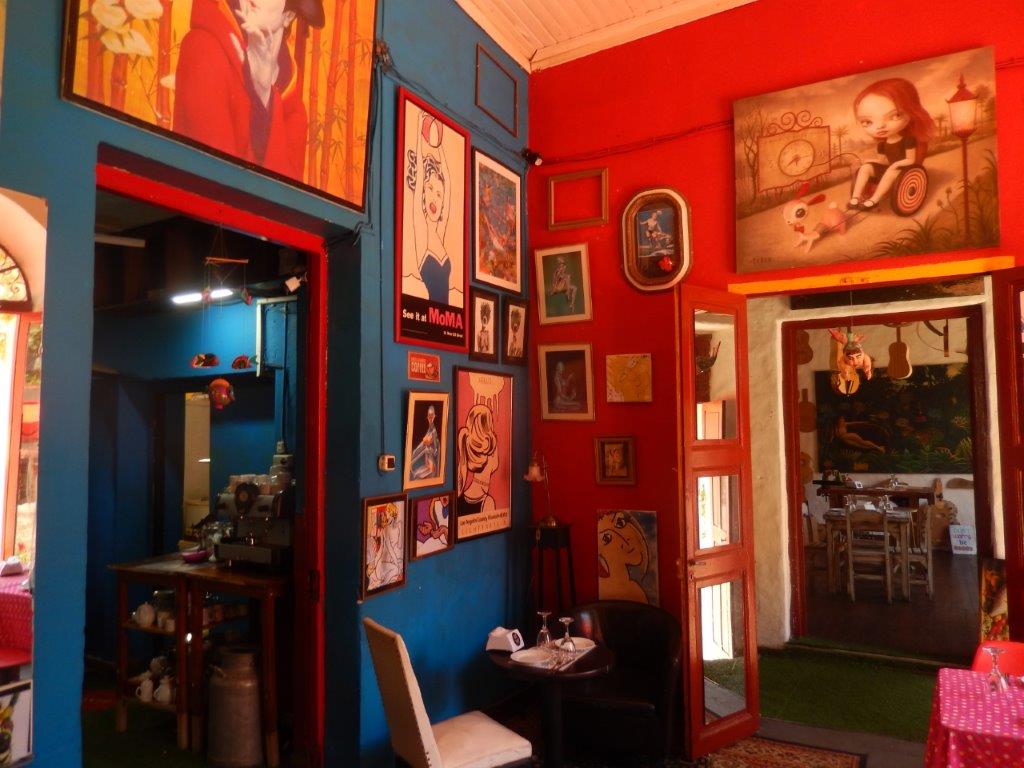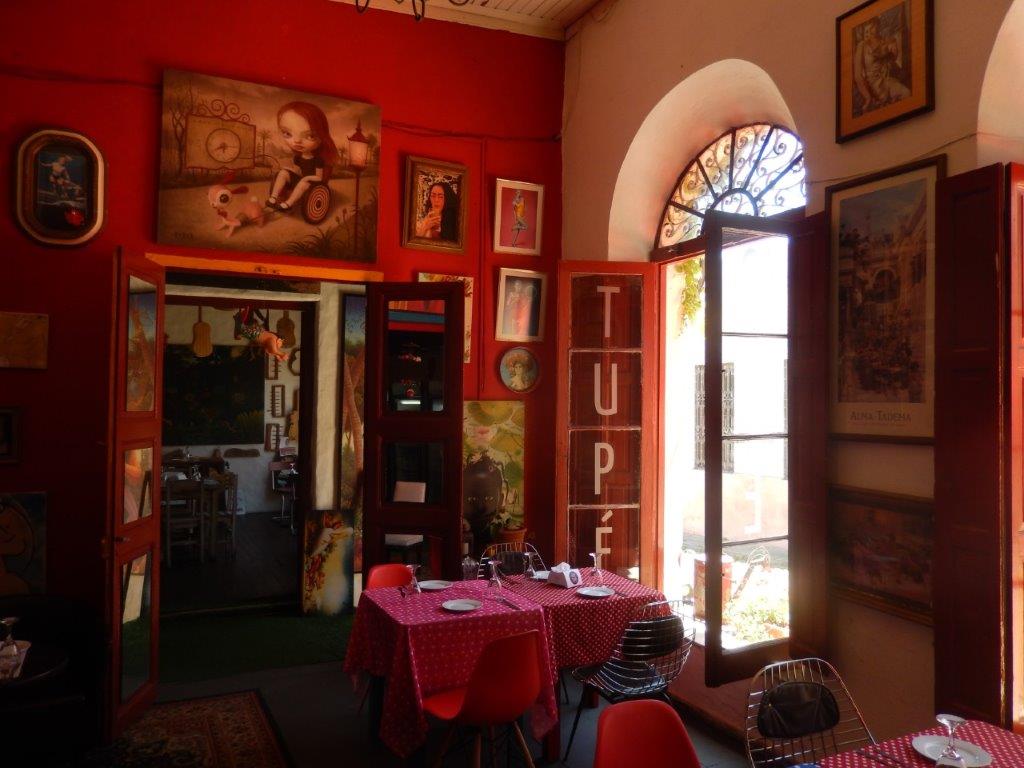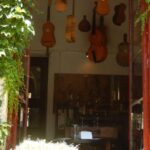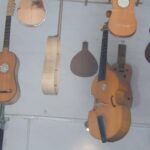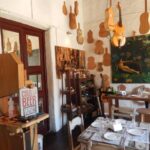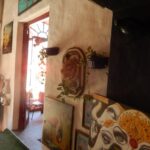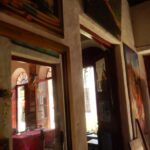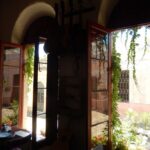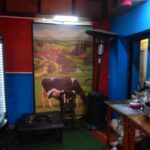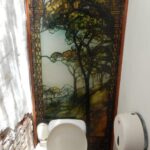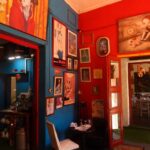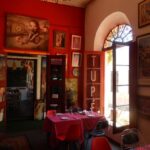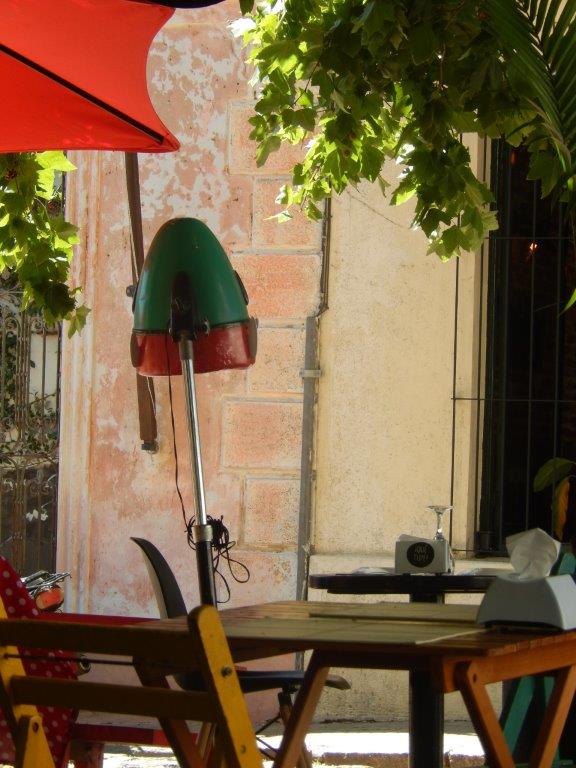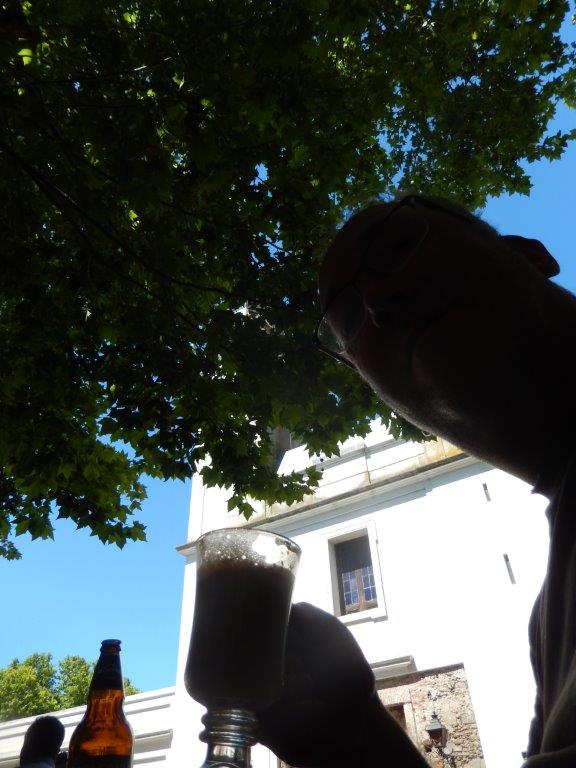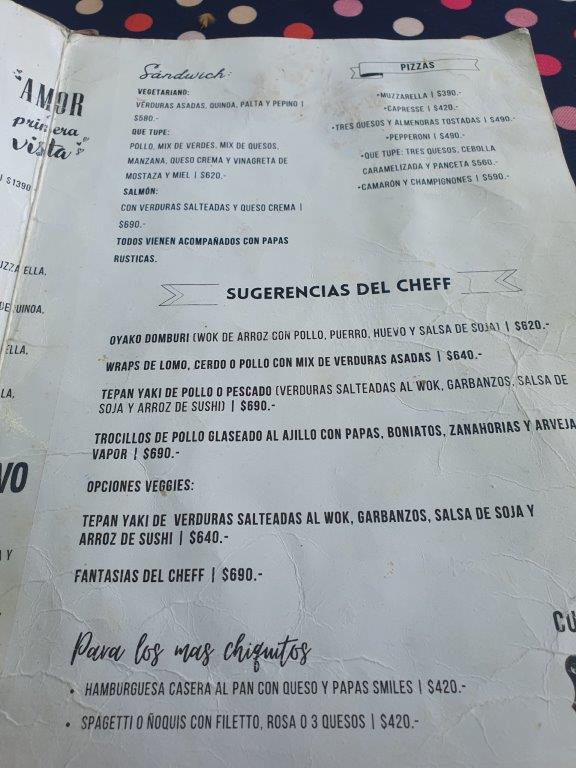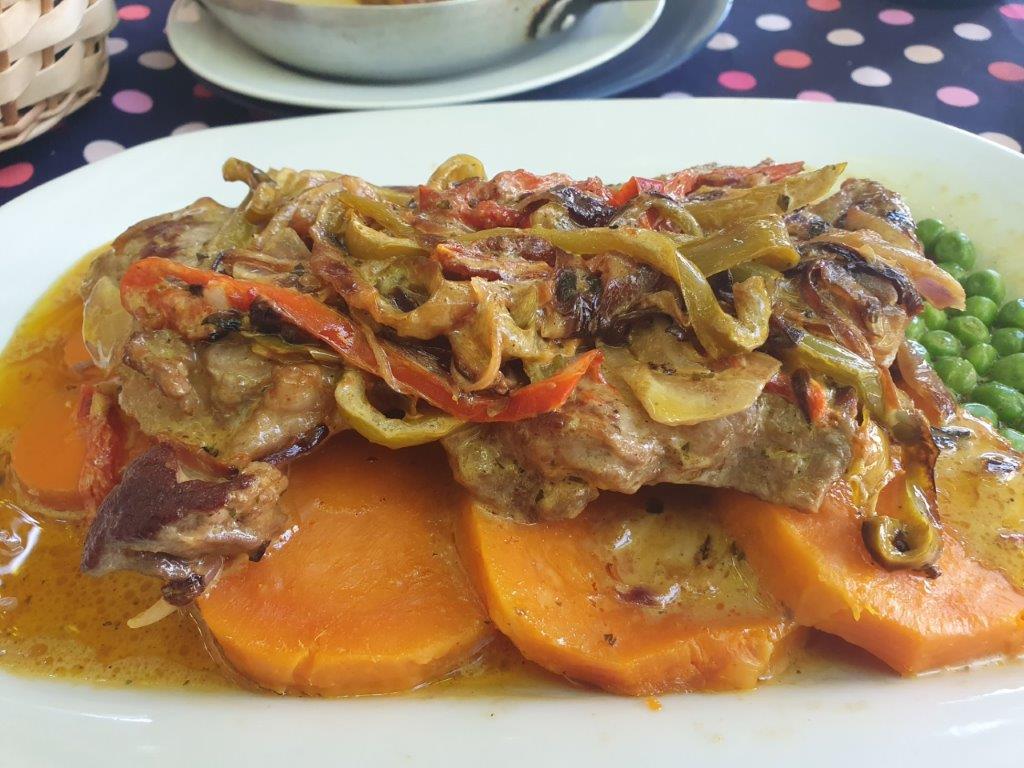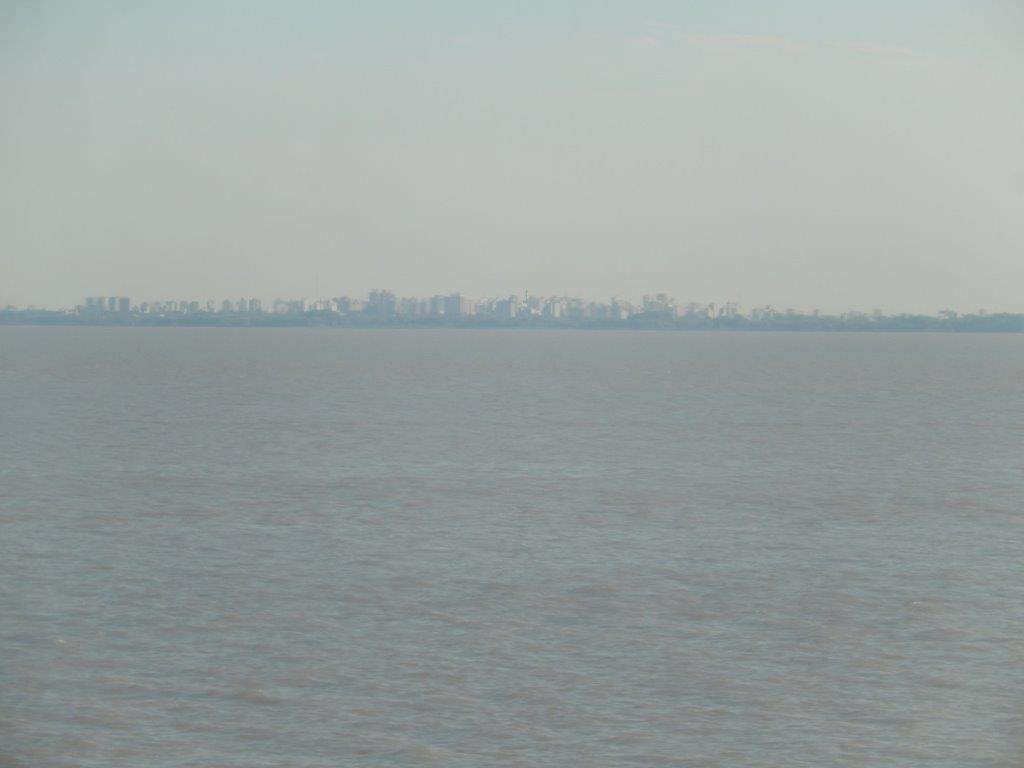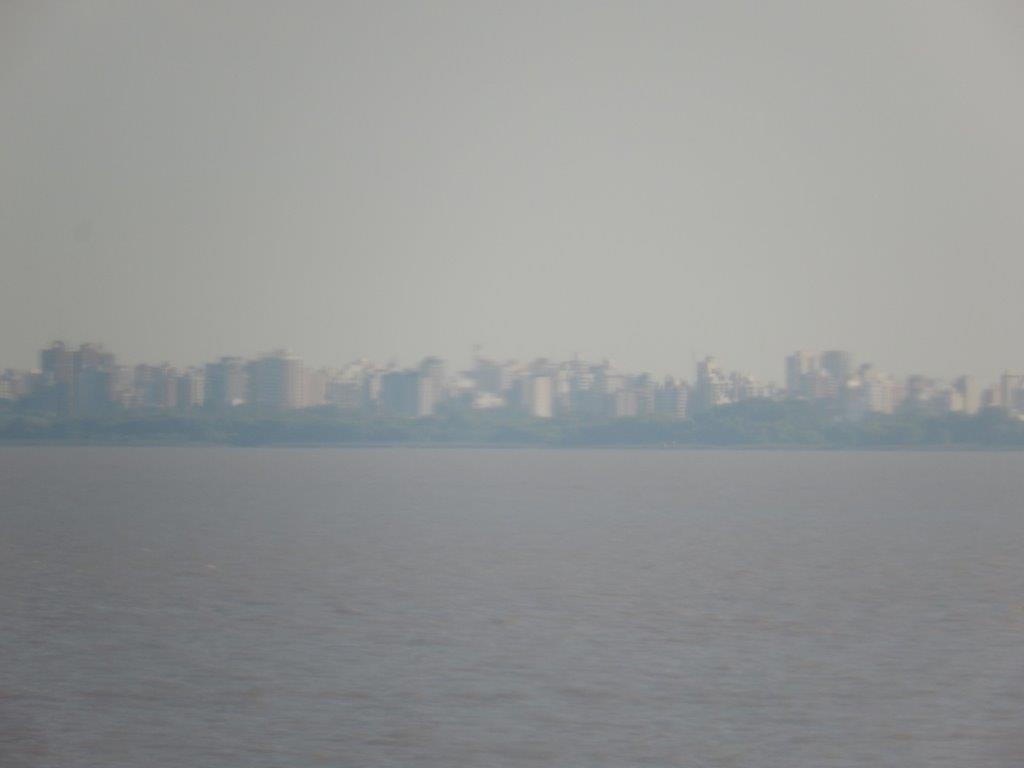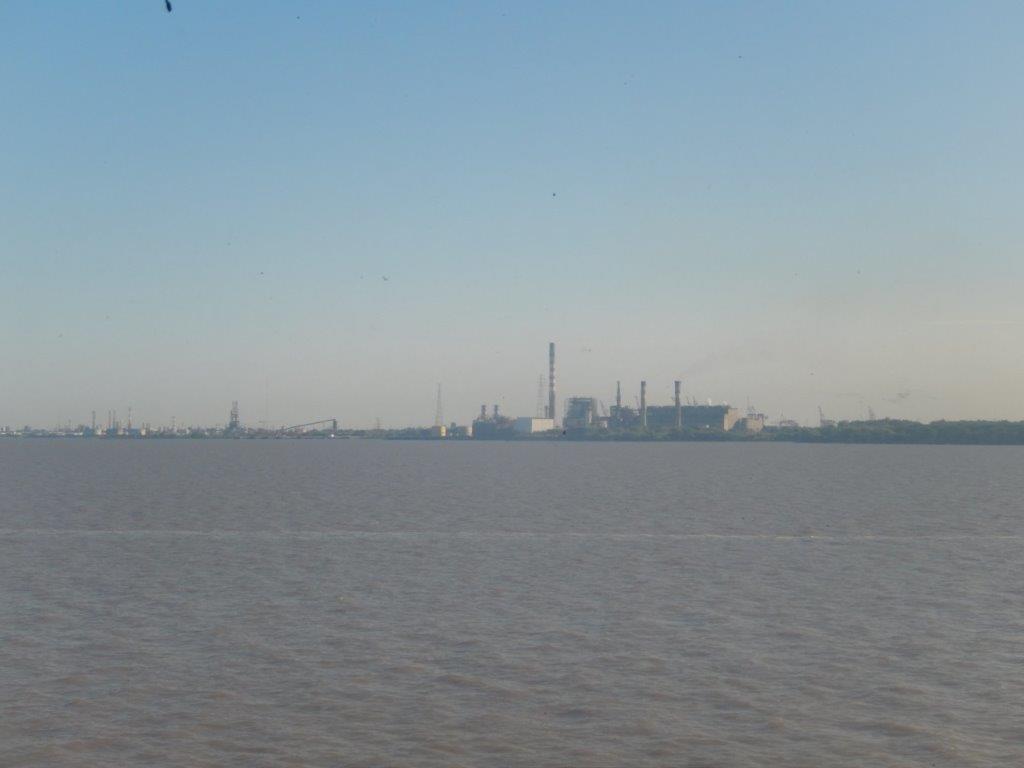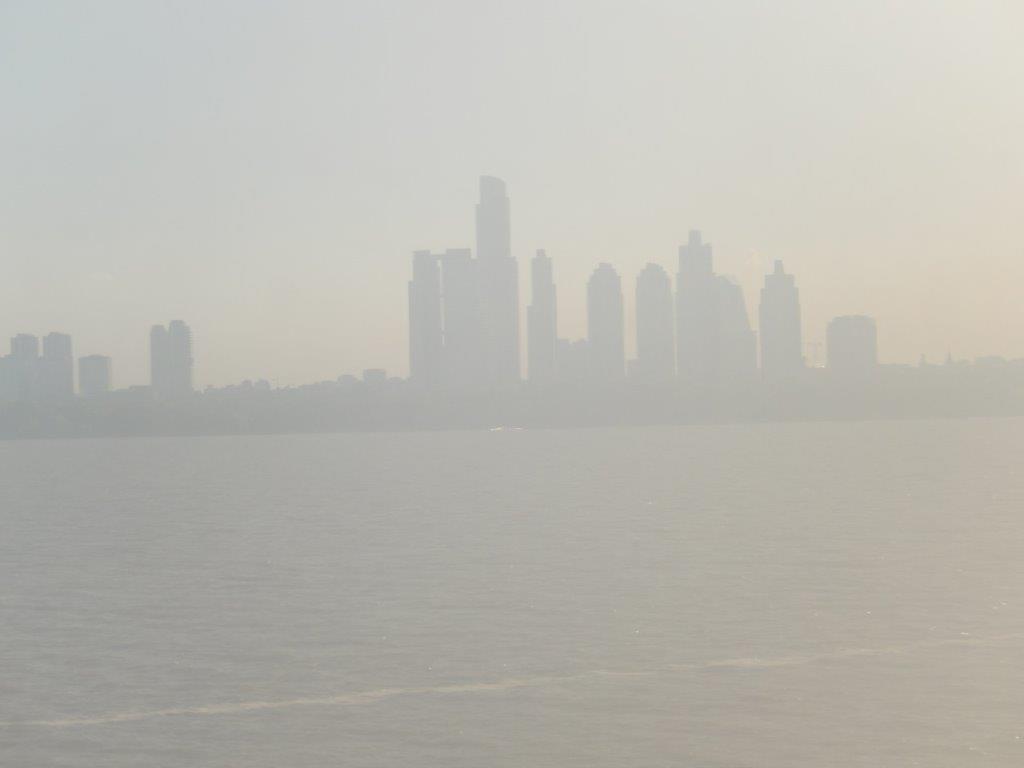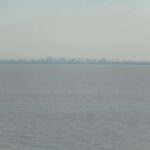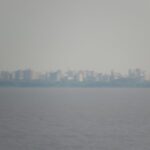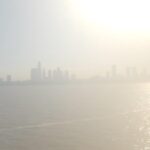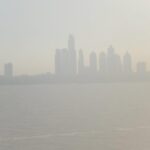46. Uruguay: A surprise visit from Buenos Aires to Uruguay’s Colonia del Sacramento (Citywalk) (UNESCO Cultural heritage site)
After returning to the San Telmo hotel in Bueno Aires (same hotel as during my 1st visit a couple of weeks earlier) which was about 21 hrs, The Wandelgek immediately began to work on his online quest for a boat ticket to Uruguay.
He was now like a one day tourist who had already seen Buenos Aires and wanted to see something more than just the town’s highlights. In that case there are some choices to make. You can e.g. try to visit a nearby farm to ride horse and see gaucho life style at San Antonio de Areco, or visit the river delta of the Parana and Paraguay rivers from Tigre, but there is a third not so obvious option. Visit Uruguay! Uruguay is just at the other side of the Rio de la Plata.
The Wandelgek had done some research at home and found out that a one day visit to Montevideo was not really feasible, due to the length of the boatride, which is about 3.5 hrs on the quickest boats. It would mean that you only had a few hours to spend there before returning.
But then he took the map (Tip: Always look at maps !!!!!!!!!!!!!!) and noticed a smaller town just opposite Buenos Aires and boats were going there too. The quickest boats in about 1 hr.!!! But was it an interesting town to visit, because it was much smaller? Well it turned out to be a town named Colonia del Sacramento, which had been an old Portuguese colonial fortress. Not many of those are left and it had made it upon the UNESCO World Heritage Site list. A quick search in Google images was enough to see it was definitely a place worth visiting.
Now all these ticket sites are in Spanish so if you do not master that language, getting a bit of help from someone who does is recommended. The Wandelgek succeeded in getting a return ticket and ordered a cab for an early drive to the harbor in Puerto Madero, next morning.
The ferry services are executed by Buquebus.
The Buquebus terminal for their ferries is huge and includes a cascade wall on one side.
There were shiny gold colored pillars for decoration…
After the ticket check and the passport check (yes you’re leaving Argentina, and the check of other required papers due to Covid, like proof of vaccination is required), you are led to the boarding area and after boarding you’ll enter a large indoor deck with many chairs…
…and a shopping area, which during the trip offers taxfree products.
The journey is quick and after arrival at the Buquebus terminal in Colonia del Sacramento, you go through passport checks again before leaving the terminal.
The historic center of Colonia del Sacramento is only a short walk from the terminal.
The Wandelgek passed over this wonderful streetart drawing…
… which kept on going and going and going …
It was still full Spring and trees were blooming everywhere …
It was just one long road straight towards the city walls and gate of the historic barrio…
Just outside the walls was the:
Lineal Afe Park
In this park The Wandelgek saw an abbundance of little birds, singing and nesting …
…and flowers growing…
There were finches and aras.
It was obvious that The Wandelgek was back from the sub arctic areas of south Patagonia …
… into the sub tropics; palm trees included.
Colonia del Sacramento
Colonia del Sacramento, known locally as Colonia, is the capital of the Colonia Department in southwestern Uruguay. It is located on the northern (left) bank of the Río de la Plata, 177 kilometers from Montevideo and facing the coast of Buenos Aires, Argentina, from which it is only about 50 kilometers away (as the crow flies).
It is located on the cape formed by the points of San Pedro and Santa Rita. Its old town, the historic district that covers 12 hectares of the western end of the city, was declared a World Heritage Site in 1995, illustrating the successful fusion of Portuguese, Spanish and post-colonial styles. The plan is of Portuguese origin and contrasts with the standard prescribed by Spanish law on the West Indies. It is characterized by its narrow stone streets, which highlight its military tradition.
Its proximity to the city of Buenos Aires strongly links it to the latter. There are many travellers who arrive and depart for that destination and also residents of Buenos Aires who own property there. There is a project to unite both banks through a binational bridge. The distance between both cities crossing the Libertador General San Martín Bridge is about 500 kilometres.
The historic barrio
The historic centre of Cologne was declared a World Heritage Site by UNESCO in 1995. Its architecture is a fusion of Spanish, Portuguese and post-colonial architectural styles. The unique preservation of the surroundings has allowed its streets to be used as exteriors for several period films, such as De eso no se habla (1993) by María Luisa Bemberg, starring Marcello Mastroianni. The Calle de los Suspiros is one of the most typical and well-known.
Portuguese Foundation of Colónia do Sacramento
On October 9, 1678, Field Master Manuel Lobo assumed command as governor of the Captaincy of Rio de Janeiro in Brazil.
At the end of 1679 Lobo, with the support of merchants from Rio de Janeiro eager to consolidate their business in South America, began to prepare an expedition to the Río de la Plata.
He headed to Santos on October 30 of that year, where he completed the expeditionary preparations and left at the beginning of December of that year.
The fleet consisted of two ships, two brigantines and other smaller vessels that carried four companies with 400 soldiers and artillery with which they planned to defend themselves in case they were attacked by the natives. The expedition carried construction and farming elements and 18 cannons for the square.
On January 1, 1680, the Portuguese arrived at the mouth of the Río de la Plata and on the 20th they occupied San Gabriel Island.
Between the 20th and 28th of that same month, Manuel Lobo founded the Nova Colônia do Santíssimo Sacramento, which was the first European settlement and the first and oldest city in what is now Uruguay .
On February 25, Lobo wrote to the Chamber (cabildo) of São Paulo, asking for aid and supplies to maintain the new colony.
The Portuguese settlement was located opposite Buenos Aires , in the eastern territory of the Uruguay River of the Spanish Government of the Río de la Plata, which at that time was governed by José de Garro .
In addition to its military purpose, the settlement in Colonia served the interests of the mercantile sector of the Portuguese bourgeoisie, which was interested in regaining access to trade with Buenos Aires, legally protected by the “seat” privilege. The suppression of the Portuguese monopoly on the supply of African slaves in 1640 cut off the possibility of sending Brazilian products such as sugar, tobacco and cotton and European manufactures to Spanish America in exchange for silver from Upper Peru. In addition, there was a great interest on the part of the Portuguese in establishing a border, which would serve as a goal for reaching the Río de la Plata by land. Colonia became a dynamic smuggling centre for Portugal and England.
City Gate/Portón de Campo (1)
The Wandelgek now reached the old gate into the historic barrio…
Old portal and wall of Colonia del Sacramento…
Bastion de San Miguel
This military Bastion is right next to the city Gate, named after Saint Michael.
The wall went further towards the Rio de la Plata.
It is an old portuguese defense work which still carries some cannons …
The Wandelgek walked, under a sunny sky, deeper into the historic barrio …
A lot of the buildings were painted white, which is remisnicent to a lot of the buildings in mediterranean Europe, like e.g. in Spain, Portugal, southern Italy and Greece. The white paint reflects the sunlight and keeps the interior cool.
… and every were purple blooming bushes and trees …
The Calle de Solis was one of the older streets in the barrio, but …
… there was one that was still mostly in its original state; the:
Street of Sighs / Calle de los Suspiros (2)
The Street of Sighs is a street in the Uruguayan city of Colonia del Sacramento . It is located within the historic center, declared a World Heritage Site by UNESCO in 1995.
It starts at the Plaza Mayor and continues on a slope to the Río de la Plata. It is a narrow street with Portuguese characteristics, with wedge paving and no sidewalks. The sides are inclined towards the center to form a drainage channel.
The houses, built in the first half of the 18th century , have stone walls, tiled roofs and ceramic floors. The doors and windows are small and made of wood. Although only houses with gabled roofs remain, there were also three- and four-gabled houses.
Like other streets in the historic centre, such as Paseo de San Miguel or Calle Real, it is marked by Portuguese-style tiles and illuminated by lanterns attached to the wall. It is, however, one of the few that maintains its original state.
Until the 1940s it was called Ansina, but the reason for its current name is unknown, about which there are different versions.
- One alludes to the brothels that were there, frequented by sailors who longed for prostitutes.
- Another, to the sighs of those condemned to death, who were made to go down to drown them in the river,
- and a third to a young woman stabbed while waiting for her lover. SIIIIIIGH😩
It is a narrow street with Portuguese characteristics, with wedge paving and no sidewalks. The sides are inclined towards the center to form a drainage channel (some water was still left behind at its deepest incline as shown in the photo above).
Along with the Citadel Gate, it is one of the most representative sites of the neighborhood.
These buildings were painted in an earthlike red color, like Terra cotta…
Then The Wandelgek moved on…
There were also quite a lot majolica tiles used for street names, illustrations of Saints, (much streets and squares and bastions were named after Saints), floormaps, e.g.
Next The Wandelgek visited the:
Ruins of the Monastery of Saint Francis and Lighthouse / Ruïnes del Convento de San Fransisco y Faro (5)
The Colonia del Sacramento lighthouse was built in 1857 on top of and against the ruins of the Convent of San Francisco Javier.
The lighthouse was painted white but the remains of the convent not.
The majolica tiled map beneath showed the Rio de la Plata and the location of lighthouses. The arrow shows this lighthouse.
The convent had lost its probably wooden roof …
Ruins of the San Francisco Javier Convent, one of the oldest buildings in Colonia del Sacramento are dating back to the 17th century.
I loved how well the weather had turned out today. It was a great day for photography.
Some of the tree stems were twirled around eachother…
It was not very crowded with masses of tourists hanging around …
Next The Wandelgek walked towards the Rio de la Plata and the:
Bastion de Santa Rita
There were some restaurants in this area near the Bastion and it was time for a refreshment, because the sun was blazing quite unabashed…
It all looked quite tropical…
…and it felt like one of those detours where you arrived at a place where you were not meant to be, where nobody knows you, where you hadn’t planned going and where you had to make an effort to get to. Well The Wandelgek had done some research before travelling, but he thought due to covid regulations that he would not be able to get here and suddenly he was. This type of places always had another effect on him then the ones he planned to go to. In planned places he always knew where to go to, what he wanted to see, what he most certainly didn’t want to miss and most of such days were meticulously planned. But this unplanned type of detour felt like there were no obligations, there was nothing to miss or that had to be seen, there was however a feeling of Zen, of Peace, of Relaxation and of slowing down everything.
He sat down on one of the terraces and ordered two ice cold, freshly squeezed orange juice (which is his favorite drink in this kind of situation). He ordered two because they did not have a pint 😉
And looking from beneath the shade of a large tree towards the Rio de la Plata and the palm trees, ablaze in the sunlight, he soooo much enjoyed those drinks …
After a long while, he moved on and walked towards the:
Bastion de San Pedro
At the Bastion were a flagpole…
… and an anchor …
A bit further was some more majolica tilework.
This map was in remembrance of the events in 1762 which included a bombardment and siege of Colonia by an Anglo-Portuguese fleet.
But it all started with the Spanish invasion of Portugal (1762) between 5 May and 24 November, and it was a military episode in the wider Fantastic War in which Spain and France were defeated by the Anglo-Portuguese Alliance with broad popular resistance.
Spain temporarily seized Colonia but was defeated by the Anglo Portuguese troops in december, just like what happened in Europe.
It was one of the many moments in time where Colonia switched from Portuguese into Spanish hands and vice versa.
The Wandelgek moved further towards the Puerto Viejo/ Old harbor, enjoying the many beautiful views over the scattered islands in front of Colonia in the Rio de la Plata..
Not a care in the world could penetrate his mind while walking there …
I mean look at this ….
Then The Wandelgek spotted some fishing boats …
… and a lighthouse on one of the islands as well …
There were fishermen on the coast of Colonia too …
Now The Wandelgek had closed in on those fishing boat. They were probably fishing for the local restaurants of which many had seafood on their menus …
then The Wandelgek reached the:
Old harbor/Puerto Viejo
At the old harbor were two piers that stretched into the water. One was a rather new concrete pier, but the shorter one was a historic wooden fishing pier from 1866 named muelle, partly damaged but renovated.

The Wandelgek walked past the boats towards the end of the longer pier…
… from where he had an unobstructed view over the many islands in the Rio de la Plata and of the Colonia del Sacramento riverfront….
A lonely fisherman at the harbor …
Again The Wandelgek decided to just go and sit on a bench and soak it all in …
He was again near the lighthouse and his gaze was now also drawn by the twin towered portuguese style Basilica, rising above the other buildings …
So he walked away from the water, deeper into town, sat down on another terrace to drink a café cortado and then randomly roamed through the small streets of Colonia …
Occasionally he had a view on the lighthouse…
… or walked over a small shady square …
But in the end he found himself in front of the:
Basilica of the Holy Sacrament / Basilica del Santisimo Sacramento (12)
The Basilica of the Holy Sacrament is a Roman Catholic parish church in Colonia del Sacramento, Uruguay.
The parish was established on 2 February 1680, being one of the oldest in the country. The first church was a humble mud ranch. It is as old as the city itself (a former Portuguese settlement). The present church dates back to 1810, when it was built according to plans by Tomás Toribio; soon afterward a lightning storm destroyed the building, which was restored between 1836 and 1841. Finally, in 1976 a conceptual refurbishment took place. Architects José Terra Carve, Antonio Cravotto, and Miguel Ángel Odriozola worked on its restoration.
This church was originally a modest hut built in 1680, the year the city was founded. Exactly on February 2 of that same year, the primitive church made of straw and earth was built. In 1683, when the Colony was returned to the Portuguese by the “Provisional Treaty”, the church continued to be a hut made of adobe and straw until 1699, when by order of Governor Sebastián de Veiga Cabral, it was built with stone and lime. In the first decades of the 18th century, works were also carried out. The church suffered successive partial destruction due to war accidents, such as the siege that lasted two years, under the command of Governor Salcedo. Vasconcellos managed to restore it in the form of a Latin cross, with the nave in the narrower presbytery area, a tiled roof and two towers. When Pedro de Cevallos besieged the Colony, he ordered new restoration works. In 1777, the site was once again in ruins due to bombings and the Chapel of the Third Order of St. Francis was used as a parish church. However, it suffered a fire and Colonia was left without a church, so a chapel called Santa Rita was used. In 1810, a new church was inaugurated, but in 1823, a lightning strike devastated the sacristy, destroying the main altar and partially damaging its structure. The explosion was caused by a Portuguese powder magazine that was located under the sacristy, with ammunition that had been stored there during the Cisplatine Domination, thus destroying the reconstruction work carried out by the eminent Spanish architect Don Tomas Toribio.
A feeling of majestic serenity invades the heart of anyone who passes through its entrance door surrounded by semi-hidden stones. Inside there are two tombs; one of them is that of the vicar Domingo Rama and the other that of Father Barredo, who practiced his duties there for forty years.
The Church and this event are mentioned by Charles Darwin in his travel diary aboard the HMS Beagle between 1831 and 1836: “The Church is a curious ruin. It was used as a powder magazine, and was struck by lightning during one of the thousands of thunderstorms on the River Plate. The explosion blew two-thirds of the building to the foundations; the other part remains standing as a rare and shattered monument to the power of electricity and gunpowder combined.”
The building, which has survived to this day with few changes, was completed between 1808 and 1810, largely using the existing construction. It was rebuilt according to the plans of the Spanish architect Tomás Toribio .
As Darwin mentioned, it was struck by lightning and then rebuilt again between 1836 and 1841 (the date from which its last restored walls date). In 1976, the damaged parts were rebuilt, leaving everything that is original visible.
The church stands out for its wide walls, its altars and its beautiful carvings. Also noteworthy is a 16th century altarpiece.
The altar wall was covered in marble, and when it was knocked down during one of its restorations, it was discovered that half a metre further back was the authentic wall. The cast iron chalice over gilt, -now located on the altar-, was the standard on the exterior façade of the church in 1841. It still preserves a baptismal font that belonged to one of the first chapels, back in 1700, a Spanish wooden altar, as well as a crucifix carved by the Indians of the Jesuit missions, the figure of Saint Francis of Assisi, together with a throne from the 19th century and a Portuguese-Brazilian missionary tabernacle made of jacaranda, which delicately adorn the temple. On the side wall you can see the different construction styles; differentiating the Portuguese-style stone walls from the Spanish-style brick ones.
The façade and the tiled domes of the bell towers were restored starting in 1957. The architects José Terra Carve, Antonio Cravotto and Miguel Ángel Odriozola worked on the restoration of the parish church. The first of those named was the director of this work.
There was a cemetery around it and during the restoration, many remains were extracted. In recent excavations, on the left side of the temple, there are ruins of the foundations of what was “The House of the Governors”, which together with the church were the main buildings of the city.
Next, The Wandelgek walked over to the plaza de Armas, which is next to the Basilica.
Plaza de Armas
The central section of this large square is dedicated to the ruins of the Governor’s House.
Archeological Rescue of the Governor’s House / Rescate Arqueológico de la Casa del Gobernador (11)
The Governor’s House, also known as Government House, Government Fort or simply El Fuerte, was a historic building located in the Old City of Montevideo, Uruguay, on the site where Plaza Zabala is today. Its construction began in 1768 and until its demolition in 1880 it served as the seat of political power in the region, first as the home of the Governor of Montevideo during the Viceroyalty of the Río de la Plata and later also as the seat of the Executive Branch of the new Oriental State of Uruguay.
Presidents Rivera, Oribe, Suárez, Giró, Berro and Flores had their offices in this building. In one of its rooms, in 1853, General Juan Antonio Lavalleja died.
The building was constructed on the same site where a military fort previously stood, the Montevideo Fort, initially made of mud and branches and designed by the engineer Petrarca, it was the second military construction built between 1724 and 1725 with the aim of defending the colonial city.
The Fort, for reasons of military defence, had a different layout from the colonial checkerboard used to diagram the city, and was oriented on the North-South axis, unlike the rest of the layout.
At the end of the 18th century in 1880, the Fort lost its defensive purpose and after its demolition the Governor’s House of Montevideo was built in its place. This had various uses throughout its history, it was used as the headquarters and residence of the governors and various public departments,
In 1808, the building underwent renovations, during which the western half of the façade was demolished to make way for a two-story extension. In the lower part of that building, the printing press donated by Princess Carlota de Borbón was installed in 1810 ; and later, in 1816, during the government of Artigas, the National Library was established .
In 1818, when the Court of Appeals was created under Portuguese rule, the upper floor was used for the Court and its offices, and the ground floor, which was occupied by the library and the printing press, was vacated to be used for another purpose. The printing press was moved to the Town Hall and the library to a corner as a storage room.
In 1822, the eastern part of the building was designated for the establishment of the Lancasterian School, a free school founded by the Society of that name.
Between 1830 and 1880 it was the seat of the Executive Power. It was demolished by decree during the regime of Lorenzo Latorre, transforming the site into a public square.
The fort was originally a low building almost entirely made of stone with a tiled roof. The main entrance faced north, almost opposite the old San Felipe theater. Entering, to the left were the treasury, the Accounting Office, the Guard Corps and auxiliary offices, to the right the “indispensable service office”, on the south side the great Government Hall and to the west and in the center the Governor’s Chapel.
Then The Wandelgek entered the:
Paseo de San Antonio
From here The Wandelgek walked through the Paseo de San Antonio for a last part of this citywalk, before thinking of dinner.
The choice to come to South America in its Spring (in Europe’s Autumn, paid off very well. In nature The Wandelgek had spotted many young animals and in nature as well as in towns, all trees were blooming.
Again he saw a majolica tableau depicting the fortress of Colonia in 1762. An important year for this town.
The Wandelgek also strolled over the beautiful:
Avenida General Flores
This beautiful street ligned by two rows of old trees over its entire length which is considerable, is like a green oasis in town, providing lots of shade on hot sunny days.
After following this street for a while,…
… The Wandelgek returned toward the Basilica del Santisimo Sacramento and while doing so he photographed some really beautiful classic old timer cars, probably not fit for driving anymore, but still fit as decorations.
The vibes of this little town were a bit like what he had always thought Havanna on Cuba would be like.
Just opposite of the Basilica, The Wandelgek had seen a restaurant that had caught his attention before.
The Drugstore (restaurant)
At first It had been the old car that caught his eye,…
But the overall vibe here seemed really good.
The exterior of the building itself was quite beautiful …
… but although he didn’t want to go and sit inside on a sunny day like this, he loved the interior as well and enjoyed walking around a bit …
… before sitting down on the outide terrace where an ancient hairdryer caught his eye. Was it for decoration or were customers drinking a cup of coffee while a barber helped them?
The beautiful terrace was in the shade of some large trees and opposite the beautiful Portuguese basilica…
The Wandelgek now enjoyed an Uruguayan cappuccino which was much more like an Italian cappuccino then an Argentinian cappuccino and he found out that the Patagonia brewery also had a Weizenbeer. Wow!
The menu was quite diverse and yes there were even 2 veggie dishes.
The Wandelgek however chose the Trocillos de pollo, with all sorts of vegetables like carrots and peas, onions, paprika and mushrooms.
This was the perfect ending for a beautiful day in Colonia del Sacramento.
What a great, relaxing day and what a beautiful detour it had been to this little Uruguayan town in Portuguese setting, so close to bustling Buenos Aires.
After a last cappuccino even sprinkled with a chocolate topping, something The Wandelgek had really missed in Argentina, The Wandelgek felt completely and utterly ZEN…..
 After dinner The Wandelgek returned to the Buquebus terminal.
After dinner The Wandelgek returned to the Buquebus terminal.
Return ride to Buenos Aires
It was now late afternoon and when the boat arrived at Buenos Aires, the sun was already sinking toward the horizon…
My next blogpost will be about Buenos Aires by night.


